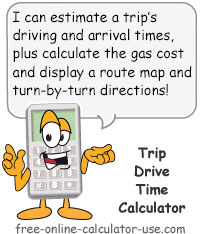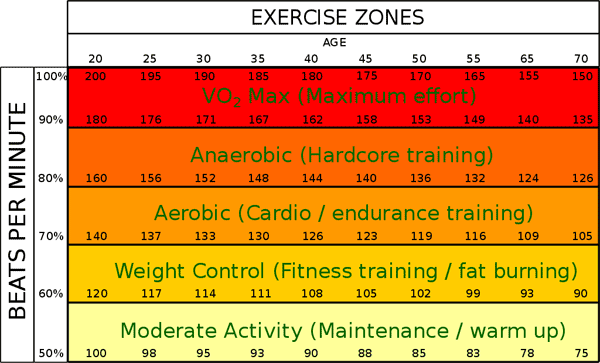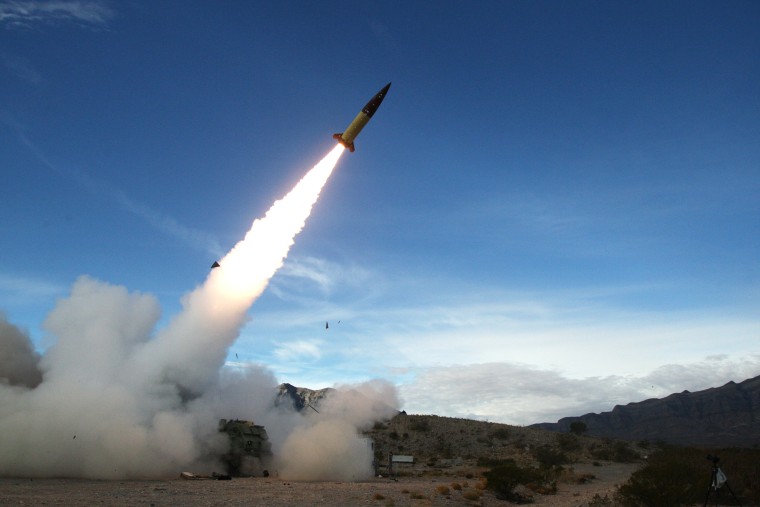Speed Distance Time Calculator
Please enter the speed and distance values to calculate the travel time in hours, minutes and seconds.

About Speed Distance Time Calculator
This online calculator tool can be a great help for calculating time basing on such physical concepts as speed and distance. Therefore, in order to calculate the time, both distance and speed parameters must be entered. For the speed , you need to enter its value and select speed unit by using the scroll down menu in the calculator. For distance , you should enter its value and also select the proper length measurement unit from the scroll down menu. You'll receive the result in standard time format (HH:MM:SS).
Time Speed Distance Formula
Distance is equal to speed × time. Time is equal Distance/Speed.
Calculate Time from Distance and Speed Examples
Recent comments.
Going 65mph for 30 seconds how far would you get? None of these formulas work without distance. How would I find the distance from time and speed?
if i travel 0.01 inches per second and I need to travel 999999999 kilometers, it takes 556722071 Days and 20:24:34 WHAT
4. How long does it take to do 100m at 3kph ? No I thought you would just divide 100 ÷ 3 = which 33.33333 so 33 seconds or so I thought. But apparently it 2 mins.
This was the best tool ive ever used that was on point from speed to distance and time Calculator
This was somewhat unhelpful as I know the time and distance, but not the speed. Would be helpful if this calculator also could solve the other two as well.
If a total distance of 2 miles is driven, with the first mile being driven at a speed of 15mph, and the second mile driven at a speed of 45 mph: What is the average speed of the full 2 mile trip?
hi sorry im newly introduced to this and i dont understand how to use it but in need to find the distance if i was travelling in the average speed of 15km/hr in 4 hours how far would i travel
D= 697 km T= 8 hours and 12 minutes S= ?
if a train is going 130 miles in 50 minutes, how fast is it going in miles per hour ??
whats the speed if you travel 2000 miles in 20hours?
How long would it take me to drive to Mars at 100 miles per hour and how much gas would I use in a 2000 Ford Mustang000000/ Also, how much CO2 would I release into the air?
great tool helped me alot
A car can go from rest to 45 km/hr in 5 seconds. What is its acceleration?
Guys how much time will a cyclist take to cover 132 METRES With a speed of 8 km/ph
@Mike Depends on how fast that actually is. For every 10 mph above 60, but below 120, you save 5 seconds a mile. But between the 30-60 area, every ten saves 10 seconds a mile (if I am remembering correctly), and every 10 between 15-30 is 20 seconds. Realistically, it isn't likely isn't worth it, unless it is a relatively straight drive with no stops, in which case you will likely go up a gear for the drive and thus improve gas efficiency for the trip. Only really saves time if it is over long trips 300+ miles (in which case, assuming you were on the interstate) that 5 seconds a mile would save you 25 minutes from the drive, making it go from 4h35m to 4h10m. For me, I have family across the U.S., so family visits are usually 900-1400 miles. Even only driving 5 above usually saves me 90-150 minutes or so (since I often have stretches where I drive on US highways which have 55 mph speed limits)
I would like to know if driving fast is worth it for short trips. If I drive 10 MPH over the speed limit for 10 miles, how much time do i save ? Is there an equation for that ?
it helps me in lot of stuff
awesome, helped me notice how long my taiga (electric seedoo) is going to last.
Very good! This helped me a lot.

- Salary & Income Tax Calculators
- Mortgage Calculators
- Retirement Calculators
- Depreciation Calculators
- Statistics and Analysis Calculators
- Date and Time Calculators
- Contractor Calculators
- Budget & Savings Calculators
- Loan Calculators
- Forex Calculators
- Real Function Calculators
- Engineering Calculators
- Tax Calculators
- Volume Calculators
- 2D Shape Calculators
- 3D Shape Calculators
- Logistics Calculators
- HRM Calculators
- Sales & Investments Calculators
- Grade & GPA Calculators
- Conversion Calculators
- Ratio Calculators
- Sports & Health Calculators
- Other Calculators
Speed Distance Time Calculator
Initially, this amazing calculator was developed especially for athletes, cyclists or joggers. However, all people who are required due to their activities to calculate an unknown variable with the help of the other two variables, will find use in it. You can use it in two ways. First, enter two particular variables in order to find the third one. Second, you may find the variable by entering the details.
Time can be entered as hh:mm:ss , mm:ss or ss (hh=hours mm=minutes ss=seconds).
Example Time Formats:
- 1:20:45 = 1 hour, 20 minutes and 45 seconds
- 18:25 = 18 minutes and 25 seconds
- 198 = 198 seconds = 3 minutes and 18 seconds
Speed: miles yards feet inches kilometers meters centimeters per hour minute second
Distance: miles yards feet inches kilometers meters centimeters millimeters
You may set the number of decimal places in the online calculator. By default there are only two decimal places.
0 1 2 3 4 5 6 7 8 9 Decimal Places
Speed miles/hr miles/min miles/sec yards/hr yards/min yards/sec feet/hr feet/min feet/sec inch/hr inch/min inch/sec km/hr km/min km/sec meter/hr meter/min meter/sec cm/hr cm/min cm/sec mm/hr mm/min mm/sec
Distance miles yards feet inches kilometers meters centimeters millimeters
Time (hh:mm:ss)
This calculator includes the following algorithms:
Speed = Distance divided by Time
Distance = Speed multiplied by Time
Time = Distance divided by Speed
You may also be interested in our Running Pace Calculator or Steps to Miles Calculator
- Currently 4.09/5
Rating: 4.1 /5 (244 votes)
Speed, Distance & Time Calculator
Use this speed calculator to easily calculate the average speed, distance travelled and the trip duration of a vehicle: car, bus, train, bike, motorcycle, plane etc. Works with miles, feet, kilometers, meters, etc..
Related calculators
- Speed, Distance & Time Calculation
- Average Speed formula
- Distance formula
- Duration (Time) formula
- How to calculate the average speed of a car?
Speed, Distance & Time Calculation
In order to use the above speed, distance & time calculator, or do such math on your own, you will need to know two out of three metrics: speed, distance, time. You will need to convert the metrics to the same time and distance units, e.g. miles, kilometers, meters, yards, feet, and hours, minutes or seconds. For example, if you have speed in mph (miles per hour), time should also be in hours. If you have distance in kilometers, then speed should also be in km/h (kilometers per hour).
The unit of the result will depend on the units you input, but our speed calculator will conveniently display additional units where appropriate.
Average Speed formula
The formula for average speed, also called average velocity in physics and engineering, is:
where v is the velocity, d is the distance, and t is the time, so you can read it as Speed = Distance / Time . As noted above, make sure you convert the units appropriately first, or use our speed calculator which does that automatically. The resulting unit will depend on the units for both time and distance, so if your input was in miles and hours, the speed will be in mph. If it was in meters and seconds, it will be in m/s (meters per second).
Example: If you took a plane from New York to Los Angeles and the flight was 5 hours of air time, what was the speed of the plane, given that the flight path was 2450 miles? The answer is 2450 / 5 = 490 mph (miles per hour) average speed. If you want the result in km/h, you can convert from miles to km to get 788.58 km/h.
Distance formula
The formula for distance, if you know time (duration) and the average speed, is:
Example: If a truck travelled at an average speed of 80 km per hour for 4 hours, how many miles did it cover in that time? To find the miles covered, first, calculate 80 * 4 = 320 km, then convert km to miles by dividing by 1.6093 or by using our km to miles converter to get the answer: 198.84 miles.
Duration (Time) formula
The time, or more precisely, the duration of the trip, can be calculated knowing the distance and the average speed using the formula:
where d is the distance travelled, v is the speed (velocity) and t is the time, so you can read it as Time = Distance / Speed . Make sure you convert the units so both their distance and time components match, or use our trip duration calculator above which will handle conversions automatically. For example, if you have distance in miles and speed in km/h, you will need to convert speed to mph or distance to kilometers. The time unit of the result will match the time unit of the speed measure, so if it is measured in something per hour, the result will be in hours. If it is measured in some unit per second, the result will be in seconds.
Example: If a train can travel 500 miles with an average speed of 50 miles per hour, how long it would take it to complete a 500-mile route? To find the answer, use the formula and substitute the values, resulting in 500 / 50 = 10 hours.
How to calculate the average speed of a car?
Say you travelled a certain distance with a car or another vehicle and you want to calculate what its average speed was. The easiest way to do that would be by using the calculator above, but if you prefer, you can also do the math yourself. Either way, you need to know the distance to a satisfactory approximation, for which you can use a map (e.g. Google Maps) to measure the distance from point to point. Make sure you measure closely to the path you took, and not via a straight line, unless you travelled by air in which case that would be a good approximation. Of course, having a GPS reading of the distance would be more precise. Then you need to know the travel time. Make sure you subtract any rests or stops you made from the total trip duration.
If the total distance travelled was 500 miles and the time it took you was 5 hours, then your average speed was 500 / 5 = 100 miles per hour (mph). If the distance was 300 kilometers and it took you 5 hours to cover it, your speed was 300 / 5 = 60 km/h (kilometers per hour).
Cite this calculator & page
If you'd like to cite this online calculator resource and information as provided on the page, you can use the following citation: Georgiev G.Z., "Speed Distance Time Calculator" , [online] Available at: https://www.gigacalculator.com/calculators/speed-calculator.php URL [Accessed Date: 25 Apr, 2024].
Transportation calculators
- Skip to main content
- Skip to primary sidebar

Distance and Average Speed to Travel Time Calculator
Click save settings to reload page with unique web page address for bookmarking and sharing the current tool settings
✕ clear settings
Flip tool with current settings and calculate average speed or total distance
Related Tools
- Average speed calculator
- Travel distance calculator
- Convert speed into different units
- Convert distance into different units
- Convert time duration into different units
This calculator will estimate the travel time for a journey using the travel distance to destination and the expected average speed of the method of travel.
Once a distance and speed have been entered the calculated time will be displayed in the answer box. Also a conversion scale will be generated for different values of distance versus time at the same speed.
This tool estimates the journey time with the following formula:
- d = Distance
Distance Travelled
Enter the expected distance to be travelled in any units.
Average Speed
Enter the estimated average speed of the intended method of transport.
Time Estimate
This is an estimate of the total time it will take to complete the journey without any delays.

Time, Speed, and Distance Calculator
Time, speed, and distance are interconnected concepts. You can calculate time by dividing distance by speed (Time = Distance / Speed) and calculate speed by dividing distance by time (Speed = Distance / Time). These calculations help determine how long it takes to cover a distance at a given speed or how fast you are traveling based on the distance covered and time taken.
- Time (hours) = Distance (miles) / Speed (miles per hour)
- Miles per hour (mph) = Distance (miles) / Time (hours)
- Average Speed (mph) = Total Distance (miles) / Total Time (hours)
- 10:15 (30 minutes after 9:45 AM)
- Minutes per mile = Time (minutes) / Distance (miles)
- Miles per hour (mph) = 60 (minutes in an hour) / Minutes per mile
- Miles per hour per hour (mph²) is a measure of acceleration, indicating how quickly speed changes over time.
- The speed of 1 mile per hour (1 mph) means you would travel 1 mile in 1 hour.
- Convert hours to minutes (1 hour = 60 minutes) and then add or subtract minutes as needed.
- To calculate time manually, divide the total distance by the speed (Time = Distance / Speed).
- Distance is directly proportional to speed. As speed increases, the distance covered in a given time also increases.
- Total Distance = Speed (mph) x Time (hours)
- Distance = Speed (mph) x Time (hours)
- Average Speed = Total Distance / Total Time
- Add the hours together, and if there are more than 60 minutes, convert them into hours (1 hour = 60 minutes).
- The time to cover 1 mile in minutes depends on the speed. For example, at a speed of 60 mph, it takes 1 minute to cover 1 mile.
- To pace a 5k, determine your target time and divide it by 3.1 (the number of miles in a 5k) to get your target pace in minutes per mile.
- A brisk walking pace for a 66-year-old woman might range from 2.5 to 3.5 miles per hour.
- 30 minutes equal to 0.5 hours.
- To add minutes to a time, simply add the minutes to the existing minutes, and if they exceed 60, adjust the hours accordingly.
- 45 minutes on a time clock is equivalent to 0.75 hours.
- Calculate walking speed by dividing the distance walked by the time it took to walk that distance.
- The time to cover 6 miles depends on the walking or running speed. At 6 miles per hour, it takes 60 minutes to cover 6 miles.
- A 1-minute mile is equivalent to 60 miles per hour.
- A 20-minute mile is equivalent to 3 miles per hour.
- A 4-minute mile is equivalent to 15 miles per hour.
- An 8-minute mile is equivalent to 7.5 miles per hour.
- The best miles per hour (mph) depends on the context. In terms of speed limits, it varies by location, but safe driving within speed limits is recommended.
- Yes, the UK uses miles per hour (mph) for measuring vehicle speed.
- At a constant speed of 60 mph, you would travel 60 miles in 1 hour.
- If you travel at a constant speed of 2 miles per hour, you would cover 2 miles in 1 hour.
- The distance covered in 30 minutes depends on the speed. At 60 mph, you would cover 30 miles in 30 minutes.
- The easiest way to calculate hours worked is to subtract the start time from the end time, accounting for breaks if necessary.
- 1 hour 40 minutes 48 seconds is equivalent to 1.680 hours.
- 1 hour 20 minutes is equivalent to 1.333 hours.
- You can estimate minutes using a rough count based on your own perception of time.
- Divide the number of minutes by 60 to convert them into hours (1 hour = 60 minutes).
- Speed (mph) = Distance (miles) / Time (hours)
- The value 18.5 could represent various measurements, so it’s important to specify the units and context (e.g., 18.5 miles, 18.5 mph, etc.).
- No, distance does not change with speed. Distance is a measure of how much ground is covered, while speed is the rate of travel.
- Velocity includes both speed and direction, whereas speed only measures how fast something is moving without considering direction.
- No, you cannot find distance without knowing the time it takes to cover that distance.
- The best method for finding distance depends on the available information and the specific problem. The formula Distance = Speed x Time is commonly used.
- Speed per hour is calculated by dividing the speed by the number of hours (Speed per hour = Speed / Hours).
- Time (hours) = Distance (miles) / Speed (mph)
- Distance problems can be solved by using the formula Distance = Speed x Time and rearranging it to find the missing value (Speed or Time).
- 24 hours is equivalent to 1 day.
- Yes, 3:00 PM is the same as 15:00 in the 24-hour clock.
- 15 minutes equal 0.25 hours or one-quarter of an hour.
- 0.50 is equivalent to 30 minutes.
- 0.25 is equivalent to 15 minutes.
- Quarter past 9 is 9:15 AM or 21:15 in the 24-hour clock.
- 7:00 AM to 3:00 PM is 8 hours.
- Time and a half is typically calculated by multiplying the regular hourly rate by 1.5 for overtime hours.
- A 5-minute mile is equivalent to 12 miles per hour.
- A pace of 7 mph means you can run or walk 1 mile in approximately 8 minutes and 34 seconds.
- It takes the average person about 15 to 20 minutes to walk 1 mile.
- As a beginner, start with a walk/run approach, gradually increasing running intervals. Aim for consistent training and build endurance.
- A common strategy for beginners is to run at a comfortable pace, take walk breaks if needed, and aim to complete the 5K distance without overexertion.
- A 5K should feel challenging but manageable. Beginners may experience a mix of excitement and fatigue during the race.
- Walking 2 miles a day can be beneficial for a 70-year-old woman’s overall health and fitness, but it’s essential to consult a healthcare professional before starting any new exercise routine.
- A 70-year-old woman can aim to walk about 10 to 20 miles per week, depending on her fitness level and goals.
- 2 hours and 30 minutes is equivalent to 150 minutes.
- 0.50 of an hour is equivalent to 30 minutes.

GEG Calculators is a comprehensive online platform that offers a wide range of calculators to cater to various needs. With over 300 calculators covering finance, health, science, mathematics, and more, GEG Calculators provides users with accurate and convenient tools for everyday calculations. The website’s user-friendly interface ensures easy navigation and accessibility, making it suitable for people from all walks of life. Whether it’s financial planning, health assessments, or educational purposes, GEG Calculators has a calculator to suit every requirement. With its reliable and up-to-date calculations, GEG Calculators has become a go-to resource for individuals, professionals, and students seeking quick and precise results for their calculations.
No related posts.
Leave a Comment Cancel reply
Save my name, email, and website in this browser for the next time I comment.

Travel Time Calculator
Introduction.
In the fast-paced world of travel and transportation, optimizing the time spent on journeys is essential. The Travel Time Calculator emerges as a handy tool, offering a swift solution to estimate travel durations. Whether planning a road trip, commuting, or scheduling flights, this calculator proves invaluable for individuals seeking accurate and efficient travel time predictions.
The Travel Time Calculator relies on a simple formula to determine the duration of a journey. The formula is expressed as:
Travel Time=Distance Speed Travel Time = Speed Distance
Here, the distance represents the length of the journey, and the speed denotes the average speed at which the travel occurs. The result is the estimated time required to cover the specified distance.
How to Use?
Utilizing the Travel Time Calculator is a straightforward process. Follow these steps to obtain quick and accurate travel time estimates:
- Enter Distance : Input the distance of your journey. This could be in miles, kilometers, or any other relevant unit.
- Specify Average Speed : Enter the average speed at which you anticipate traveling. This speed should reflect the overall pace of your journey, considering factors such as speed limits and road conditions.
- Click Calculate or Submit : Most calculators feature a button to initiate the computation. Clicking this button will generate the estimated travel time based on the provided distance and speed.
- Review the Output : The calculator will display the estimated travel time, allowing you to plan your schedule with precision.
Consider a road trip covering a distance of 300 miles, with an anticipated average speed of 60 miles per hour. Using the Travel Time Calculator, the estimated travel time would be calculated as follows:
Travel Time=300 miles60 mph=5 hours Travel Time = 60 mph 300 miles = 5 hours
Q: Can the Travel Time Calculator account for variations in speed during a journey? A: The calculator provides an average travel time based on the entered average speed. For more detailed calculations, consider segmenting the journey into different legs with varying speeds.
Q: Is the Travel Time Calculator suitable for air travel? A: While the calculator primarily focuses on ground travel, it can provide rough estimates for air travel based on the average speed of the flight.
Q: Does the calculator consider factors like traffic and stops? A: The Travel Time Calculator offers a basic estimate and may not account for variables like traffic, stops, or delays. It’s advisable to use it as a planning tool and adjust for real-time conditions.
Conclusion:
The Travel Time Calculator is a valuable companion for anyone planning journeys, whether for business or leisure. By providing quick and reliable estimates, it facilitates effective time management and helps individuals make informed decisions about their travel schedules. Embracing this calculator empowers travelers to plan their trips with confidence, ensuring they reach their destinations on time and with minimal hassle.
Leave a Comment Cancel reply
Save my name, email, and website in this browser for the next time I comment.
Speed and Time Calculator
Search calculateme.
Speed Calculator
Table of contents
This speed calculator is a tool that helps you determine the average speed of a moving object based on the distance traveled over a certain time traveled. Whether you are test-driving your brand-new car or just going for a quick jog or cycle, if you want to know how to find average speed, this calculator will come in handy.
In the article below, you can find a lot of valuable information, like what the average speed formula is. We will also give you a few curious speed facts (e.g., the speed of sound formula ). Check this speed distance calculator and finally find an answer to the question how fast am I going?
Speed, distance, time
We have all heard of speed , but how confident are you in your understanding of this concept? Speed is, by definition, purely related and connected to physics. However, when you take the time to think about it, you don't see the vectors and formulas from your textbook, but instead, a cyclist, flying jet, or speedometer needle. We mostly associate speed with moving objects than with scientific equations. What is more, we have a sense that tells us how quickly we are traveling; that is, we can sense whether we are moving fast or not. For example, when you drive a car at a speed of 50 km/h, this is not too fast relative to the max speed of the car, but when you ride a bike with the same speed, it feels like a lot. So, we can say that the human perception of speed is relative.
Automobiles and trains measure speed in kilometers per hour (kph) or in miles per hour (mph), and on airplanes and ships, we usually use knots (kn). On the other hand, physicists most often use the SI base units which are meters per second (m/s). The speed definition hides behind these units, and we can get familiar with it by examining them. Everything about speed is related to distance and time. The units of speed are specified by traveled distance units divided by units of time, and that is the general idea of speed. In a more simple way — speed is the distance traveled per unit of time .
How fast am I going? — types of speed
Speed is not a precise term — there are a few more accurate meanings, and they should not be confused with each other. Let's consider the differences between instantaneous speed , average speed and rotational speed . For the purpose of two first, we will try to visualize it with an example of driving a car.
You are driving along the long, open highway. You glance down at the speedometer of your car; it reads 100 kilometers per hour. From this, you know how far you will drive if you keep the speed constant. We know that, in practice, keeping the speed exactly constant is almost impossible (although, on a highway with cruise control, it is nearly possible), and our speed fluctuates all the time, more or less. The actual distance you travel in an hour is the average of all these speeds. Conclusion — the average speed is the total distance traveled in a unit of time (e.g., in an hour).
So, what does the number your speedometer indicates really mean? That is your instantaneous speed; your speed at this exact moment. According to the textbook definition, the instantaneous speed is the change in object position, x, between two times, t 1 and t 2 (where this time interval approaches zero, i.e., t 2 - t 1 → 0).
The rotational speed is a slightly different term, related rather to rotating objects than to objects that change their position in space. Accordingly, the rotational speed is the number of complete revolutions that an object makes in a unit of time . It is expressed in radians per second (rad/s) or in revolutions per minute (rpm) units. We will not focus more on this topic because it is not the aim of this speed distance calculator. If you would like to find out more about the topic of angular speed, go to our angular acceleration calculator or the rotational kinetic energy calculator .
Average speed formula
Since the main purpose of this calculator is to calculate average speed, let's take a more in-depth look at this topic. Average speed is measured in units of distance per time, and the average speed formula looks like this:
average speed = total distance / total time
Typical units are kilometers per hour (kph), miles per hour (mph), meters per second (m/s), and feet per second (ft/s). In our mph calculator, the default unit is mph (kph for metric-units countries), but you can change between any of the common units.
🙋 To know more about determining the average speed, check out our average rate of change calculator .
Speed calculator — how to find your average speed?
Using this speed distance calculator is really easy, and you will get your result immediately. Check the points below to learn how to use this calculator properly:
- First, you need to determine the distance . This might be, for example, the distance you have driven from home to another city. Input this into the appropriate field.
- Now, there is a need to determine the time it took to cover a certain distance. Input this into the calculator.
- And here it is, you'll get the average speed .
You can also expand the section below your result to access the extra functionality of this average speed calculator. Here, you can compare what the difference in time would be if the object was traveling at another average speed (a positive value if the object is traveling for a longer time and a negative value if the object is traveling for a shorter time).
Average speed vs average velocity
Speed and velocity might seem to be the same thing, but they're not. Speed is a scalar quantity — it is defined by magnitude only. In simple terms, it tells you how fast an object is moving. On the other hand, velocity is a vector — it is defined not only by magnitude but also by direction. It tells you the rate at which an object changes its position.
Imagine you drove a car 100 meters forward and then 100 meters back. You would drive at a certain average speed in each direction, but you would have zero average velocity, as velocity is measured as the rate at which the position of the car changes, and, overall, the car didn't change its position. Therefore, it is enough to say that the average speed of a car was 50 mph, but when calculating velocity, we would have to add direction, let's say 50 mph east.
🙋 Take a look at the velocity calculator for a full discussion on the difference between velocity and speed!
Speed of sound — curious speed related facts
Do you have a need… a need for speed? Take a look at some interesting facts and striking numbers of the speed of different objects and animals!
Nothing can go faster than the speed of light, even if we take into account that speed is a relative measurement. Light moves at the speed of 299 792 458 meters per second, which approximately gives 300 000 kilometers per second or 186 000 miles per second. The time it takes for the light from the Sun to reach the Earth is around 8 minutes.
Sound moves through the air at a speed of around 343 meters per second, which is 1234.8 km/h or 767 mph (at 20 °C / 68 °F). It means that a sound wave in air needs about 2.9 seconds to travel one kilometer, or 4.7 seconds to travel a mile — this data might be useful for storm-hunters to determine the lighting distance . In 2012, Austrian Felix Baumgartner broke the sound barrier (with his body!) during a free-fall from 128 000 feet. He reached a speed of 843.6 mph. To put it into context, the typical passenger of jet aircraft cruises at an altitude of 33 000 - 35 000 feet, at a speed of around 500 mph (depending on the aircraft type as well as on the wind speed).
You've probably heard that the fastest animal on the land is the cheetah, and it is true. Its maximum speed is really incredible, and, according to the latest research, it can reach speeds of up to 58 mph! Another amazing example is the peregrine falcons. They can reach speeds exceeding… 200 mph in air! In water, the fastest animal is the Atlantic sailfish — 68 mph in water.
What about people? Sprinter Usain Bolt is the fastest man ever in recorded history, with a recorded speed of 27.44 mph. What is interesting, scientists found that a man who lived 20 000 years ago in Australia (called T8) ran with the speed of 23 mph. Note he did it barefoot in the mud, while Bolt uses state-of-the-art running shoes and a dedicated track.
Is velocity the same as speed?
Velocity and speed are very nearly the same — in fact, the only difference between the two is that velocity is speed with direction . Speed is what is known as a scalar quantity, meaning that it can be described by a single number (how fast you’re going). It is also the magnitude of velocity. Velocity, a vector quantity, must have both the magnitude and direction specified, e.g., traveling 90 mph southeast.
What is the most economical driving speed?
While the most economical driving speed changes with every vehicle , the general consensus is that it is around 50 mph (80 km/h) . There are a few other things you can do to maximize efficiency, however. First, try to maintain a constant speed ; this will make your engine run as efficiently as possible — use cruise control on flats if you have it. Second, drive at the highest possible gear within the speed limit ; this again helps your engine run as economically as possible. Other tips include turning off AC and having as little weight in your car as you can .
Can Google Maps tell me my speed?
Google Maps can tell you your speed; it has an inbuild speedometer , which is only currently available for Android users. It is on by default, but to make sure it is on, go to settings → navigation settings , and under the driving options menu, there will be a slider for it. It is useful as it will change color if you are exceeding the limit — so you don’t have to take your eyes off the road. You can also report speed cameras and traps — but only if you’re in navigation mode.
How do you calculate mph to seconds?
- Take your current speed in either kph or mph.
- Divide it by 60 to get kilometers per minute or miles per minute.
- Divide by 60 again, getting kilometers per second or miles per second.
- Alternatively, divide it by 3600 for the straight conversion.
What are the types of speed?
Speed has many different types and terms to describe it:
- Speed — how fast an object is traveling.
- Velocity — how fast an object is traveling in a certain direction.
- Acceleration — how quickly it takes an object to reach a certain speed.
- Constant speed — an object moving at the same rate.
- Variable speed — an object moving at a changing rate.
- Average speed — distance covered divided by time taken to traverse.
- Instantaneous speed — the speed at a particular instance.
What is the unit for speed?
The unit for speed is distance over time , as it is defined as the amount of time it takes an object to cover a particular distance. The base, or SI, unit is meters per second , but this is not very practical in everyday life. You are likely more familiar with units such as kilometers per hour, miles per hour, and knots . Any distance over time is a speed unit, so other units of speed include nanometres per fortnight, Boeing 787s per solar year, or bananas per Friedman.
How do you convert between mph and kph?
To convert from miles per hour to kilometers per hour :
- Take your speed.
- Multiply the value by 1.6.
To convert kilometers per hour to miles per hour :
- Multiply the value by 0.62.
A handy trick if you don’t have a calculator to hand (e.g., you're driving) is to use the Fibonacci sequence (1, 1, 2, 3, 5, 8…). Take a number; the next one in the sequence is the kilometers if the previous one was miles (e.g., 50 mph is roughly 80 kph).
How do you find the final speed?
If you have the average and initial speed :
- Multiply the average speed by 2.
- Subtract the initial speed.
- You’re left with the final speed .
If you have initial speed, acceleration, and time :
- Multiply the time and acceleration.
- Add the initial speed to this number.
- Revel in your calculation .
What is the formula to calculate average speed?
The most common formula for average speed is distance traveled divided by time taken . The other formula, if you have the initial and final speed , add the two together and divide by 2.
What are the types of acceleration?
There are two types of acceleration, average and instantaneous . Average acceleration is the change in velocity divided by the change of time and is how an object's movement changes with time, on average. Instantaneous acceleration is the derivative of velocity with respect to time , or the limit of the average acceleration over an infinitesimal period of time. It is used to find the exact acceleration of an object at a particular time.
.css-slt4t3.css-slt4t3{color:#2B3148;background-color:transparent;font-family:"Roboto","Helvetica","Arial",sans-serif;font-size:20px;line-height:24px;overflow:visible;padding-top:0px;position:relative;}.css-slt4t3.css-slt4t3:after{content:'';-webkit-transform:scale(0);-moz-transform:scale(0);-ms-transform:scale(0);transform:scale(0);position:absolute;border:2px solid #EA9430;border-radius:2px;inset:-8px;z-index:1;}.css-slt4t3 .js-external-link-button.link-like,.css-slt4t3 .js-external-link-anchor{color:inherit;border-radius:1px;-webkit-text-decoration:underline;text-decoration:underline;}.css-slt4t3 .js-external-link-button.link-like:hover,.css-slt4t3 .js-external-link-anchor:hover,.css-slt4t3 .js-external-link-button.link-like:active,.css-slt4t3 .js-external-link-anchor:active{text-decoration-thickness:2px;text-shadow:1px 0 0;}.css-slt4t3 .js-external-link-button.link-like:focus-visible,.css-slt4t3 .js-external-link-anchor:focus-visible{outline:transparent 2px dotted;box-shadow:0 0 0 2px #6314E6;}.css-slt4t3 p,.css-slt4t3 div{margin:0px;display:block;}.css-slt4t3 pre{margin:0px;display:block;}.css-slt4t3 pre code{display:block;width:-webkit-fit-content;width:-moz-fit-content;width:fit-content;}.css-slt4t3 pre:not(:first-child){padding-top:8px;}.css-slt4t3 ul,.css-slt4t3 ol{display:block margin:0px;padding-left:20px;}.css-slt4t3 ul li,.css-slt4t3 ol li{padding-top:8px;}.css-slt4t3 ul ul,.css-slt4t3 ol ul,.css-slt4t3 ul ol,.css-slt4t3 ol ol{padding-top:0px;}.css-slt4t3 ul:not(:first-child),.css-slt4t3 ol:not(:first-child){padding-top:4px;} .css-4okk7a{margin:auto;background-color:white;overflow:auto;overflow-wrap:break-word;word-break:break-word;}.css-4okk7a code,.css-4okk7a kbd,.css-4okk7a pre,.css-4okk7a samp{font-family:monospace;}.css-4okk7a code{padding:2px 4px;color:#444;background:#ddd;border-radius:4px;}.css-4okk7a figcaption,.css-4okk7a caption{text-align:center;}.css-4okk7a figcaption{font-size:12px;font-style:italic;overflow:hidden;}.css-4okk7a h3{font-size:1.75rem;}.css-4okk7a h4{font-size:1.5rem;}.css-4okk7a .mathBlock{font-size:24px;-webkit-padding-start:4px;padding-inline-start:4px;}.css-4okk7a .mathBlock .katex{font-size:24px;text-align:left;}.css-4okk7a .math-inline{background-color:#f0f0f0;display:inline-block;font-size:inherit;padding:0 3px;}.css-4okk7a .videoBlock,.css-4okk7a .imageBlock{margin-bottom:16px;}.css-4okk7a .imageBlock__image-align--left,.css-4okk7a .videoBlock__video-align--left{float:left;}.css-4okk7a .imageBlock__image-align--right,.css-4okk7a .videoBlock__video-align--right{float:right;}.css-4okk7a .imageBlock__image-align--center,.css-4okk7a .videoBlock__video-align--center{display:block;margin-left:auto;margin-right:auto;clear:both;}.css-4okk7a .imageBlock__image-align--none,.css-4okk7a .videoBlock__video-align--none{clear:both;margin-left:0;margin-right:0;}.css-4okk7a .videoBlock__video--wrapper{position:relative;padding-bottom:56.25%;height:0;}.css-4okk7a .videoBlock__video--wrapper iframe{position:absolute;top:0;left:0;width:100%;height:100%;}.css-4okk7a .videoBlock__caption{text-align:left;}@font-face{font-family:'KaTeX_AMS';src:url(/katex-fonts/KaTeX_AMS-Regular.woff2) format('woff2'),url(/katex-fonts/KaTeX_AMS-Regular.woff) format('woff'),url(/katex-fonts/KaTeX_AMS-Regular.ttf) format('truetype');font-weight:normal;font-style:normal;}@font-face{font-family:'KaTeX_Caligraphic';src:url(/katex-fonts/KaTeX_Caligraphic-Bold.woff2) format('woff2'),url(/katex-fonts/KaTeX_Caligraphic-Bold.woff) format('woff'),url(/katex-fonts/KaTeX_Caligraphic-Bold.ttf) format('truetype');font-weight:bold;font-style:normal;}@font-face{font-family:'KaTeX_Caligraphic';src:url(/katex-fonts/KaTeX_Caligraphic-Regular.woff2) format('woff2'),url(/katex-fonts/KaTeX_Caligraphic-Regular.woff) format('woff'),url(/katex-fonts/KaTeX_Caligraphic-Regular.ttf) format('truetype');font-weight:normal;font-style:normal;}@font-face{font-family:'KaTeX_Fraktur';src:url(/katex-fonts/KaTeX_Fraktur-Bold.woff2) format('woff2'),url(/katex-fonts/KaTeX_Fraktur-Bold.woff) format('woff'),url(/katex-fonts/KaTeX_Fraktur-Bold.ttf) format('truetype');font-weight:bold;font-style:normal;}@font-face{font-family:'KaTeX_Fraktur';src:url(/katex-fonts/KaTeX_Fraktur-Regular.woff2) format('woff2'),url(/katex-fonts/KaTeX_Fraktur-Regular.woff) format('woff'),url(/katex-fonts/KaTeX_Fraktur-Regular.ttf) format('truetype');font-weight:normal;font-style:normal;}@font-face{font-family:'KaTeX_Main';src:url(/katex-fonts/KaTeX_Main-Bold.woff2) format('woff2'),url(/katex-fonts/KaTeX_Main-Bold.woff) format('woff'),url(/katex-fonts/KaTeX_Main-Bold.ttf) format('truetype');font-weight:bold;font-style:normal;}@font-face{font-family:'KaTeX_Main';src:url(/katex-fonts/KaTeX_Main-BoldItalic.woff2) format('woff2'),url(/katex-fonts/KaTeX_Main-BoldItalic.woff) format('woff'),url(/katex-fonts/KaTeX_Main-BoldItalic.ttf) format('truetype');font-weight:bold;font-style:italic;}@font-face{font-family:'KaTeX_Main';src:url(/katex-fonts/KaTeX_Main-Italic.woff2) format('woff2'),url(/katex-fonts/KaTeX_Main-Italic.woff) format('woff'),url(/katex-fonts/KaTeX_Main-Italic.ttf) format('truetype');font-weight:normal;font-style:italic;}@font-face{font-family:'KaTeX_Main';src:url(/katex-fonts/KaTeX_Main-Regular.woff2) format('woff2'),url(/katex-fonts/KaTeX_Main-Regular.woff) format('woff'),url(/katex-fonts/KaTeX_Main-Regular.ttf) format('truetype');font-weight:normal;font-style:normal;}@font-face{font-family:'KaTeX_Math';src:url(/katex-fonts/KaTeX_Math-BoldItalic.woff2) format('woff2'),url(/katex-fonts/KaTeX_Math-BoldItalic.woff) format('woff'),url(/katex-fonts/KaTeX_Math-BoldItalic.ttf) format('truetype');font-weight:bold;font-style:italic;}@font-face{font-family:'KaTeX_Math';src:url(/katex-fonts/KaTeX_Math-Italic.woff2) format('woff2'),url(/katex-fonts/KaTeX_Math-Italic.woff) format('woff'),url(/katex-fonts/KaTeX_Math-Italic.ttf) format('truetype');font-weight:normal;font-style:italic;}@font-face{font-family:'KaTeX_SansSerif';src:url(/katex-fonts/KaTeX_SansSerif-Bold.woff2) format('woff2'),url(/katex-fonts/KaTeX_SansSerif-Bold.woff) format('woff'),url(/katex-fonts/KaTeX_SansSerif-Bold.ttf) format('truetype');font-weight:bold;font-style:normal;}@font-face{font-family:'KaTeX_SansSerif';src:url(/katex-fonts/KaTeX_SansSerif-Italic.woff2) format('woff2'),url(/katex-fonts/KaTeX_SansSerif-Italic.woff) format('woff'),url(/katex-fonts/KaTeX_SansSerif-Italic.ttf) format('truetype');font-weight:normal;font-style:italic;}@font-face{font-family:'KaTeX_SansSerif';src:url(/katex-fonts/KaTeX_SansSerif-Regular.woff2) format('woff2'),url(/katex-fonts/KaTeX_SansSerif-Regular.woff) format('woff'),url(/katex-fonts/KaTeX_SansSerif-Regular.ttf) format('truetype');font-weight:normal;font-style:normal;}@font-face{font-family:'KaTeX_Script';src:url(/katex-fonts/KaTeX_Script-Regular.woff2) format('woff2'),url(/katex-fonts/KaTeX_Script-Regular.woff) format('woff'),url(/katex-fonts/KaTeX_Script-Regular.ttf) format('truetype');font-weight:normal;font-style:normal;}@font-face{font-family:'KaTeX_Size1';src:url(/katex-fonts/KaTeX_Size1-Regular.woff2) format('woff2'),url(/katex-fonts/KaTeX_Size1-Regular.woff) format('woff'),url(/katex-fonts/KaTeX_Size1-Regular.ttf) format('truetype');font-weight:normal;font-style:normal;}@font-face{font-family:'KaTeX_Size2';src:url(/katex-fonts/KaTeX_Size2-Regular.woff2) format('woff2'),url(/katex-fonts/KaTeX_Size2-Regular.woff) format('woff'),url(/katex-fonts/KaTeX_Size2-Regular.ttf) format('truetype');font-weight:normal;font-style:normal;}@font-face{font-family:'KaTeX_Size3';src:url(/katex-fonts/KaTeX_Size3-Regular.woff2) format('woff2'),url(/katex-fonts/KaTeX_Size3-Regular.woff) format('woff'),url(/katex-fonts/KaTeX_Size3-Regular.ttf) format('truetype');font-weight:normal;font-style:normal;}@font-face{font-family:'KaTeX_Size4';src:url(/katex-fonts/KaTeX_Size4-Regular.woff2) format('woff2'),url(/katex-fonts/KaTeX_Size4-Regular.woff) format('woff'),url(/katex-fonts/KaTeX_Size4-Regular.ttf) format('truetype');font-weight:normal;font-style:normal;}@font-face{font-family:'KaTeX_Typewriter';src:url(/katex-fonts/KaTeX_Typewriter-Regular.woff2) format('woff2'),url(/katex-fonts/KaTeX_Typewriter-Regular.woff) format('woff'),url(/katex-fonts/KaTeX_Typewriter-Regular.ttf) format('truetype');font-weight:normal;font-style:normal;}.css-4okk7a .katex{font:normal 1.21em KaTeX_Main,Times New Roman,serif;line-height:1.2;text-indent:0;text-rendering:auto;}.css-4okk7a .katex *{-ms-high-contrast-adjust:none!important;border-color:currentColor;}.css-4okk7a .katex .katex-version::after{content:'0.13.13';}.css-4okk7a .katex .katex-mathml{position:absolute;clip:rect(1px, 1px, 1px, 1px);padding:0;border:0;height:1px;width:1px;overflow:hidden;}.css-4okk7a .katex .katex-html>.newline{display:block;}.css-4okk7a .katex .base{position:relative;display:inline-block;white-space:nowrap;width:-webkit-min-content;width:-moz-min-content;width:-webkit-min-content;width:-moz-min-content;width:min-content;}.css-4okk7a .katex .strut{display:inline-block;}.css-4okk7a .katex .textbf{font-weight:bold;}.css-4okk7a .katex .textit{font-style:italic;}.css-4okk7a .katex .textrm{font-family:KaTeX_Main;}.css-4okk7a .katex .textsf{font-family:KaTeX_SansSerif;}.css-4okk7a .katex .texttt{font-family:KaTeX_Typewriter;}.css-4okk7a .katex .mathnormal{font-family:KaTeX_Math;font-style:italic;}.css-4okk7a .katex .mathit{font-family:KaTeX_Main;font-style:italic;}.css-4okk7a .katex .mathrm{font-style:normal;}.css-4okk7a .katex .mathbf{font-family:KaTeX_Main;font-weight:bold;}.css-4okk7a .katex .boldsymbol{font-family:KaTeX_Math;font-weight:bold;font-style:italic;}.css-4okk7a .katex .amsrm{font-family:KaTeX_AMS;}.css-4okk7a .katex .mathbb,.css-4okk7a .katex .textbb{font-family:KaTeX_AMS;}.css-4okk7a .katex .mathcal{font-family:KaTeX_Caligraphic;}.css-4okk7a .katex .mathfrak,.css-4okk7a .katex .textfrak{font-family:KaTeX_Fraktur;}.css-4okk7a .katex .mathtt{font-family:KaTeX_Typewriter;}.css-4okk7a .katex .mathscr,.css-4okk7a .katex .textscr{font-family:KaTeX_Script;}.css-4okk7a .katex .mathsf,.css-4okk7a .katex .textsf{font-family:KaTeX_SansSerif;}.css-4okk7a .katex .mathboldsf,.css-4okk7a .katex .textboldsf{font-family:KaTeX_SansSerif;font-weight:bold;}.css-4okk7a .katex .mathitsf,.css-4okk7a .katex .textitsf{font-family:KaTeX_SansSerif;font-style:italic;}.css-4okk7a .katex .mainrm{font-family:KaTeX_Main;font-style:normal;}.css-4okk7a .katex .vlist-t{display:inline-table;table-layout:fixed;border-collapse:collapse;}.css-4okk7a .katex .vlist-r{display:table-row;}.css-4okk7a .katex .vlist{display:table-cell;vertical-align:bottom;position:relative;}.css-4okk7a .katex .vlist>span{display:block;height:0;position:relative;}.css-4okk7a .katex .vlist>span>span{display:inline-block;}.css-4okk7a .katex .vlist>span>.pstrut{overflow:hidden;width:0;}.css-4okk7a .katex .vlist-t2{margin-right:-2px;}.css-4okk7a .katex .vlist-s{display:table-cell;vertical-align:bottom;font-size:1px;width:2px;min-width:2px;}.css-4okk7a .katex .vbox{display:-webkit-inline-box;display:-webkit-inline-flex;display:-ms-inline-flexbox;display:inline-flex;-webkit-flex-direction:column;-ms-flex-direction:column;flex-direction:column;-webkit-align-items:baseline;-webkit-box-align:baseline;-ms-flex-align:baseline;align-items:baseline;}.css-4okk7a .katex .hbox{display:-webkit-inline-box;display:-webkit-inline-flex;display:-ms-inline-flexbox;display:inline-flex;-webkit-flex-direction:row;-ms-flex-direction:row;flex-direction:row;width:100%;}.css-4okk7a .katex .thinbox{display:-webkit-inline-box;display:-webkit-inline-flex;display:-ms-inline-flexbox;display:inline-flex;-webkit-flex-direction:row;-ms-flex-direction:row;flex-direction:row;width:0;max-width:0;}.css-4okk7a .katex .msupsub{text-align:left;}.css-4okk7a .katex .mfrac>span>span{text-align:center;}.css-4okk7a .katex .mfrac .frac-line{display:inline-block;width:100%;border-bottom-style:solid;}.css-4okk7a .katex .mfrac .frac-line,.css-4okk7a .katex .overline .overline-line,.css-4okk7a .katex .underline .underline-line,.css-4okk7a .katex .hline,.css-4okk7a .katex .hdashline,.css-4okk7a .katex .rule{min-height:1px;}.css-4okk7a .katex .mspace{display:inline-block;}.css-4okk7a .katex .llap,.css-4okk7a .katex .rlap,.css-4okk7a .katex .clap{width:0;position:relative;}.css-4okk7a .katex .llap>.inner,.css-4okk7a .katex .rlap>.inner,.css-4okk7a .katex .clap>.inner{position:absolute;}.css-4okk7a .katex .llap>.fix,.css-4okk7a .katex .rlap>.fix,.css-4okk7a .katex .clap>.fix{display:inline-block;}.css-4okk7a .katex .llap>.inner{right:0;}.css-4okk7a .katex .rlap>.inner,.css-4okk7a .katex .clap>.inner{left:0;}.css-4okk7a .katex .clap>.inner>span{margin-left:-50%;margin-right:50%;}.css-4okk7a .katex .rule{display:inline-block;border:solid 0;position:relative;}.css-4okk7a .katex .overline .overline-line,.css-4okk7a .katex .underline .underline-line,.css-4okk7a .katex .hline{display:inline-block;width:100%;border-bottom-style:solid;}.css-4okk7a .katex .hdashline{display:inline-block;width:100%;border-bottom-style:dashed;}.css-4okk7a .katex .sqrt>.root{margin-left:0.27777778em;margin-right:-0.55555556em;}.css-4okk7a .katex .sizing.reset-size1.size1,.css-4okk7a .katex .fontsize-ensurer.reset-size1.size1{font-size:1em;}.css-4okk7a .katex .sizing.reset-size1.size2,.css-4okk7a .katex .fontsize-ensurer.reset-size1.size2{font-size:1.2em;}.css-4okk7a .katex .sizing.reset-size1.size3,.css-4okk7a .katex .fontsize-ensurer.reset-size1.size3{font-size:1.4em;}.css-4okk7a .katex .sizing.reset-size1.size4,.css-4okk7a .katex .fontsize-ensurer.reset-size1.size4{font-size:1.6em;}.css-4okk7a .katex .sizing.reset-size1.size5,.css-4okk7a .katex .fontsize-ensurer.reset-size1.size5{font-size:1.8em;}.css-4okk7a .katex .sizing.reset-size1.size6,.css-4okk7a .katex .fontsize-ensurer.reset-size1.size6{font-size:2em;}.css-4okk7a .katex .sizing.reset-size1.size7,.css-4okk7a .katex .fontsize-ensurer.reset-size1.size7{font-size:2.4em;}.css-4okk7a .katex .sizing.reset-size1.size8,.css-4okk7a .katex .fontsize-ensurer.reset-size1.size8{font-size:2.88em;}.css-4okk7a .katex .sizing.reset-size1.size9,.css-4okk7a .katex .fontsize-ensurer.reset-size1.size9{font-size:3.456em;}.css-4okk7a .katex .sizing.reset-size1.size10,.css-4okk7a .katex .fontsize-ensurer.reset-size1.size10{font-size:4.148em;}.css-4okk7a .katex .sizing.reset-size1.size11,.css-4okk7a .katex .fontsize-ensurer.reset-size1.size11{font-size:4.976em;}.css-4okk7a .katex .sizing.reset-size2.size1,.css-4okk7a .katex .fontsize-ensurer.reset-size2.size1{font-size:0.83333333em;}.css-4okk7a .katex .sizing.reset-size2.size2,.css-4okk7a .katex .fontsize-ensurer.reset-size2.size2{font-size:1em;}.css-4okk7a .katex .sizing.reset-size2.size3,.css-4okk7a .katex .fontsize-ensurer.reset-size2.size3{font-size:1.16666667em;}.css-4okk7a .katex .sizing.reset-size2.size4,.css-4okk7a .katex .fontsize-ensurer.reset-size2.size4{font-size:1.33333333em;}.css-4okk7a .katex .sizing.reset-size2.size5,.css-4okk7a .katex .fontsize-ensurer.reset-size2.size5{font-size:1.5em;}.css-4okk7a .katex .sizing.reset-size2.size6,.css-4okk7a .katex .fontsize-ensurer.reset-size2.size6{font-size:1.66666667em;}.css-4okk7a .katex .sizing.reset-size2.size7,.css-4okk7a .katex .fontsize-ensurer.reset-size2.size7{font-size:2em;}.css-4okk7a .katex .sizing.reset-size2.size8,.css-4okk7a .katex .fontsize-ensurer.reset-size2.size8{font-size:2.4em;}.css-4okk7a .katex .sizing.reset-size2.size9,.css-4okk7a .katex .fontsize-ensurer.reset-size2.size9{font-size:2.88em;}.css-4okk7a .katex .sizing.reset-size2.size10,.css-4okk7a .katex .fontsize-ensurer.reset-size2.size10{font-size:3.45666667em;}.css-4okk7a .katex .sizing.reset-size2.size11,.css-4okk7a .katex .fontsize-ensurer.reset-size2.size11{font-size:4.14666667em;}.css-4okk7a .katex .sizing.reset-size3.size1,.css-4okk7a .katex .fontsize-ensurer.reset-size3.size1{font-size:0.71428571em;}.css-4okk7a .katex .sizing.reset-size3.size2,.css-4okk7a .katex .fontsize-ensurer.reset-size3.size2{font-size:0.85714286em;}.css-4okk7a .katex .sizing.reset-size3.size3,.css-4okk7a .katex .fontsize-ensurer.reset-size3.size3{font-size:1em;}.css-4okk7a .katex .sizing.reset-size3.size4,.css-4okk7a .katex .fontsize-ensurer.reset-size3.size4{font-size:1.14285714em;}.css-4okk7a .katex .sizing.reset-size3.size5,.css-4okk7a .katex .fontsize-ensurer.reset-size3.size5{font-size:1.28571429em;}.css-4okk7a .katex .sizing.reset-size3.size6,.css-4okk7a .katex .fontsize-ensurer.reset-size3.size6{font-size:1.42857143em;}.css-4okk7a .katex .sizing.reset-size3.size7,.css-4okk7a .katex .fontsize-ensurer.reset-size3.size7{font-size:1.71428571em;}.css-4okk7a .katex .sizing.reset-size3.size8,.css-4okk7a .katex .fontsize-ensurer.reset-size3.size8{font-size:2.05714286em;}.css-4okk7a .katex .sizing.reset-size3.size9,.css-4okk7a .katex .fontsize-ensurer.reset-size3.size9{font-size:2.46857143em;}.css-4okk7a .katex .sizing.reset-size3.size10,.css-4okk7a .katex .fontsize-ensurer.reset-size3.size10{font-size:2.96285714em;}.css-4okk7a .katex .sizing.reset-size3.size11,.css-4okk7a .katex .fontsize-ensurer.reset-size3.size11{font-size:3.55428571em;}.css-4okk7a .katex .sizing.reset-size4.size1,.css-4okk7a .katex .fontsize-ensurer.reset-size4.size1{font-size:0.625em;}.css-4okk7a .katex .sizing.reset-size4.size2,.css-4okk7a .katex .fontsize-ensurer.reset-size4.size2{font-size:0.75em;}.css-4okk7a .katex .sizing.reset-size4.size3,.css-4okk7a .katex .fontsize-ensurer.reset-size4.size3{font-size:0.875em;}.css-4okk7a .katex .sizing.reset-size4.size4,.css-4okk7a .katex .fontsize-ensurer.reset-size4.size4{font-size:1em;}.css-4okk7a .katex .sizing.reset-size4.size5,.css-4okk7a .katex .fontsize-ensurer.reset-size4.size5{font-size:1.125em;}.css-4okk7a .katex .sizing.reset-size4.size6,.css-4okk7a .katex .fontsize-ensurer.reset-size4.size6{font-size:1.25em;}.css-4okk7a .katex .sizing.reset-size4.size7,.css-4okk7a .katex .fontsize-ensurer.reset-size4.size7{font-size:1.5em;}.css-4okk7a .katex .sizing.reset-size4.size8,.css-4okk7a .katex .fontsize-ensurer.reset-size4.size8{font-size:1.8em;}.css-4okk7a .katex .sizing.reset-size4.size9,.css-4okk7a .katex .fontsize-ensurer.reset-size4.size9{font-size:2.16em;}.css-4okk7a .katex .sizing.reset-size4.size10,.css-4okk7a .katex .fontsize-ensurer.reset-size4.size10{font-size:2.5925em;}.css-4okk7a .katex .sizing.reset-size4.size11,.css-4okk7a .katex .fontsize-ensurer.reset-size4.size11{font-size:3.11em;}.css-4okk7a .katex .sizing.reset-size5.size1,.css-4okk7a .katex .fontsize-ensurer.reset-size5.size1{font-size:0.55555556em;}.css-4okk7a .katex .sizing.reset-size5.size2,.css-4okk7a .katex .fontsize-ensurer.reset-size5.size2{font-size:0.66666667em;}.css-4okk7a .katex .sizing.reset-size5.size3,.css-4okk7a .katex .fontsize-ensurer.reset-size5.size3{font-size:0.77777778em;}.css-4okk7a .katex .sizing.reset-size5.size4,.css-4okk7a .katex .fontsize-ensurer.reset-size5.size4{font-size:0.88888889em;}.css-4okk7a .katex .sizing.reset-size5.size5,.css-4okk7a .katex .fontsize-ensurer.reset-size5.size5{font-size:1em;}.css-4okk7a .katex .sizing.reset-size5.size6,.css-4okk7a .katex .fontsize-ensurer.reset-size5.size6{font-size:1.11111111em;}.css-4okk7a .katex .sizing.reset-size5.size7,.css-4okk7a .katex .fontsize-ensurer.reset-size5.size7{font-size:1.33333333em;}.css-4okk7a .katex .sizing.reset-size5.size8,.css-4okk7a .katex .fontsize-ensurer.reset-size5.size8{font-size:1.6em;}.css-4okk7a .katex .sizing.reset-size5.size9,.css-4okk7a .katex .fontsize-ensurer.reset-size5.size9{font-size:1.92em;}.css-4okk7a .katex .sizing.reset-size5.size10,.css-4okk7a .katex .fontsize-ensurer.reset-size5.size10{font-size:2.30444444em;}.css-4okk7a .katex .sizing.reset-size5.size11,.css-4okk7a .katex .fontsize-ensurer.reset-size5.size11{font-size:2.76444444em;}.css-4okk7a .katex .sizing.reset-size6.size1,.css-4okk7a .katex .fontsize-ensurer.reset-size6.size1{font-size:0.5em;}.css-4okk7a .katex .sizing.reset-size6.size2,.css-4okk7a .katex .fontsize-ensurer.reset-size6.size2{font-size:0.6em;}.css-4okk7a .katex .sizing.reset-size6.size3,.css-4okk7a .katex .fontsize-ensurer.reset-size6.size3{font-size:0.7em;}.css-4okk7a .katex .sizing.reset-size6.size4,.css-4okk7a .katex .fontsize-ensurer.reset-size6.size4{font-size:0.8em;}.css-4okk7a .katex .sizing.reset-size6.size5,.css-4okk7a .katex .fontsize-ensurer.reset-size6.size5{font-size:0.9em;}.css-4okk7a .katex .sizing.reset-size6.size6,.css-4okk7a .katex .fontsize-ensurer.reset-size6.size6{font-size:1em;}.css-4okk7a .katex .sizing.reset-size6.size7,.css-4okk7a .katex .fontsize-ensurer.reset-size6.size7{font-size:1.2em;}.css-4okk7a .katex .sizing.reset-size6.size8,.css-4okk7a .katex .fontsize-ensurer.reset-size6.size8{font-size:1.44em;}.css-4okk7a .katex .sizing.reset-size6.size9,.css-4okk7a .katex .fontsize-ensurer.reset-size6.size9{font-size:1.728em;}.css-4okk7a .katex .sizing.reset-size6.size10,.css-4okk7a .katex .fontsize-ensurer.reset-size6.size10{font-size:2.074em;}.css-4okk7a .katex .sizing.reset-size6.size11,.css-4okk7a .katex .fontsize-ensurer.reset-size6.size11{font-size:2.488em;}.css-4okk7a .katex .sizing.reset-size7.size1,.css-4okk7a .katex .fontsize-ensurer.reset-size7.size1{font-size:0.41666667em;}.css-4okk7a .katex .sizing.reset-size7.size2,.css-4okk7a .katex .fontsize-ensurer.reset-size7.size2{font-size:0.5em;}.css-4okk7a .katex .sizing.reset-size7.size3,.css-4okk7a .katex .fontsize-ensurer.reset-size7.size3{font-size:0.58333333em;}.css-4okk7a .katex .sizing.reset-size7.size4,.css-4okk7a .katex .fontsize-ensurer.reset-size7.size4{font-size:0.66666667em;}.css-4okk7a .katex .sizing.reset-size7.size5,.css-4okk7a .katex .fontsize-ensurer.reset-size7.size5{font-size:0.75em;}.css-4okk7a .katex .sizing.reset-size7.size6,.css-4okk7a .katex .fontsize-ensurer.reset-size7.size6{font-size:0.83333333em;}.css-4okk7a .katex .sizing.reset-size7.size7,.css-4okk7a .katex .fontsize-ensurer.reset-size7.size7{font-size:1em;}.css-4okk7a .katex .sizing.reset-size7.size8,.css-4okk7a .katex .fontsize-ensurer.reset-size7.size8{font-size:1.2em;}.css-4okk7a .katex .sizing.reset-size7.size9,.css-4okk7a .katex .fontsize-ensurer.reset-size7.size9{font-size:1.44em;}.css-4okk7a .katex .sizing.reset-size7.size10,.css-4okk7a .katex .fontsize-ensurer.reset-size7.size10{font-size:1.72833333em;}.css-4okk7a .katex .sizing.reset-size7.size11,.css-4okk7a .katex .fontsize-ensurer.reset-size7.size11{font-size:2.07333333em;}.css-4okk7a .katex .sizing.reset-size8.size1,.css-4okk7a .katex .fontsize-ensurer.reset-size8.size1{font-size:0.34722222em;}.css-4okk7a .katex .sizing.reset-size8.size2,.css-4okk7a .katex .fontsize-ensurer.reset-size8.size2{font-size:0.41666667em;}.css-4okk7a .katex .sizing.reset-size8.size3,.css-4okk7a .katex .fontsize-ensurer.reset-size8.size3{font-size:0.48611111em;}.css-4okk7a .katex .sizing.reset-size8.size4,.css-4okk7a .katex .fontsize-ensurer.reset-size8.size4{font-size:0.55555556em;}.css-4okk7a .katex .sizing.reset-size8.size5,.css-4okk7a .katex .fontsize-ensurer.reset-size8.size5{font-size:0.625em;}.css-4okk7a .katex .sizing.reset-size8.size6,.css-4okk7a .katex .fontsize-ensurer.reset-size8.size6{font-size:0.69444444em;}.css-4okk7a .katex .sizing.reset-size8.size7,.css-4okk7a .katex .fontsize-ensurer.reset-size8.size7{font-size:0.83333333em;}.css-4okk7a .katex .sizing.reset-size8.size8,.css-4okk7a .katex .fontsize-ensurer.reset-size8.size8{font-size:1em;}.css-4okk7a .katex .sizing.reset-size8.size9,.css-4okk7a .katex .fontsize-ensurer.reset-size8.size9{font-size:1.2em;}.css-4okk7a .katex .sizing.reset-size8.size10,.css-4okk7a .katex .fontsize-ensurer.reset-size8.size10{font-size:1.44027778em;}.css-4okk7a .katex .sizing.reset-size8.size11,.css-4okk7a .katex .fontsize-ensurer.reset-size8.size11{font-size:1.72777778em;}.css-4okk7a .katex .sizing.reset-size9.size1,.css-4okk7a .katex .fontsize-ensurer.reset-size9.size1{font-size:0.28935185em;}.css-4okk7a .katex .sizing.reset-size9.size2,.css-4okk7a .katex .fontsize-ensurer.reset-size9.size2{font-size:0.34722222em;}.css-4okk7a .katex .sizing.reset-size9.size3,.css-4okk7a .katex .fontsize-ensurer.reset-size9.size3{font-size:0.40509259em;}.css-4okk7a .katex .sizing.reset-size9.size4,.css-4okk7a .katex .fontsize-ensurer.reset-size9.size4{font-size:0.46296296em;}.css-4okk7a .katex .sizing.reset-size9.size5,.css-4okk7a .katex .fontsize-ensurer.reset-size9.size5{font-size:0.52083333em;}.css-4okk7a .katex .sizing.reset-size9.size6,.css-4okk7a .katex .fontsize-ensurer.reset-size9.size6{font-size:0.5787037em;}.css-4okk7a .katex .sizing.reset-size9.size7,.css-4okk7a .katex .fontsize-ensurer.reset-size9.size7{font-size:0.69444444em;}.css-4okk7a .katex .sizing.reset-size9.size8,.css-4okk7a .katex .fontsize-ensurer.reset-size9.size8{font-size:0.83333333em;}.css-4okk7a .katex .sizing.reset-size9.size9,.css-4okk7a .katex .fontsize-ensurer.reset-size9.size9{font-size:1em;}.css-4okk7a .katex .sizing.reset-size9.size10,.css-4okk7a .katex .fontsize-ensurer.reset-size9.size10{font-size:1.20023148em;}.css-4okk7a .katex .sizing.reset-size9.size11,.css-4okk7a .katex .fontsize-ensurer.reset-size9.size11{font-size:1.43981481em;}.css-4okk7a .katex .sizing.reset-size10.size1,.css-4okk7a .katex .fontsize-ensurer.reset-size10.size1{font-size:0.24108004em;}.css-4okk7a .katex .sizing.reset-size10.size2,.css-4okk7a .katex .fontsize-ensurer.reset-size10.size2{font-size:0.28929605em;}.css-4okk7a .katex .sizing.reset-size10.size3,.css-4okk7a .katex .fontsize-ensurer.reset-size10.size3{font-size:0.33751205em;}.css-4okk7a .katex .sizing.reset-size10.size4,.css-4okk7a .katex .fontsize-ensurer.reset-size10.size4{font-size:0.38572806em;}.css-4okk7a .katex .sizing.reset-size10.size5,.css-4okk7a .katex .fontsize-ensurer.reset-size10.size5{font-size:0.43394407em;}.css-4okk7a .katex .sizing.reset-size10.size6,.css-4okk7a .katex .fontsize-ensurer.reset-size10.size6{font-size:0.48216008em;}.css-4okk7a .katex .sizing.reset-size10.size7,.css-4okk7a .katex .fontsize-ensurer.reset-size10.size7{font-size:0.57859209em;}.css-4okk7a .katex .sizing.reset-size10.size8,.css-4okk7a .katex .fontsize-ensurer.reset-size10.size8{font-size:0.69431051em;}.css-4okk7a .katex .sizing.reset-size10.size9,.css-4okk7a .katex .fontsize-ensurer.reset-size10.size9{font-size:0.83317261em;}.css-4okk7a .katex .sizing.reset-size10.size10,.css-4okk7a .katex .fontsize-ensurer.reset-size10.size10{font-size:1em;}.css-4okk7a .katex .sizing.reset-size10.size11,.css-4okk7a .katex .fontsize-ensurer.reset-size10.size11{font-size:1.19961427em;}.css-4okk7a .katex .sizing.reset-size11.size1,.css-4okk7a .katex .fontsize-ensurer.reset-size11.size1{font-size:0.20096463em;}.css-4okk7a .katex .sizing.reset-size11.size2,.css-4okk7a .katex .fontsize-ensurer.reset-size11.size2{font-size:0.24115756em;}.css-4okk7a .katex .sizing.reset-size11.size3,.css-4okk7a .katex .fontsize-ensurer.reset-size11.size3{font-size:0.28135048em;}.css-4okk7a .katex .sizing.reset-size11.size4,.css-4okk7a .katex .fontsize-ensurer.reset-size11.size4{font-size:0.32154341em;}.css-4okk7a .katex .sizing.reset-size11.size5,.css-4okk7a .katex .fontsize-ensurer.reset-size11.size5{font-size:0.36173633em;}.css-4okk7a .katex .sizing.reset-size11.size6,.css-4okk7a .katex .fontsize-ensurer.reset-size11.size6{font-size:0.40192926em;}.css-4okk7a .katex .sizing.reset-size11.size7,.css-4okk7a .katex .fontsize-ensurer.reset-size11.size7{font-size:0.48231511em;}.css-4okk7a .katex .sizing.reset-size11.size8,.css-4okk7a .katex .fontsize-ensurer.reset-size11.size8{font-size:0.57877814em;}.css-4okk7a .katex .sizing.reset-size11.size9,.css-4okk7a .katex .fontsize-ensurer.reset-size11.size9{font-size:0.69453376em;}.css-4okk7a .katex .sizing.reset-size11.size10,.css-4okk7a .katex .fontsize-ensurer.reset-size11.size10{font-size:0.83360129em;}.css-4okk7a .katex .sizing.reset-size11.size11,.css-4okk7a .katex .fontsize-ensurer.reset-size11.size11{font-size:1em;}.css-4okk7a .katex .delimsizing.size1{font-family:KaTeX_Size1;}.css-4okk7a .katex .delimsizing.size2{font-family:KaTeX_Size2;}.css-4okk7a .katex .delimsizing.size3{font-family:KaTeX_Size3;}.css-4okk7a .katex .delimsizing.size4{font-family:KaTeX_Size4;}.css-4okk7a .katex .delimsizing.mult .delim-size1>span{font-family:KaTeX_Size1;}.css-4okk7a .katex .delimsizing.mult .delim-size4>span{font-family:KaTeX_Size4;}.css-4okk7a .katex .nulldelimiter{display:inline-block;width:0.12em;}.css-4okk7a .katex .delimcenter{position:relative;}.css-4okk7a .katex .op-symbol{position:relative;}.css-4okk7a .katex .op-symbol.small-op{font-family:KaTeX_Size1;}.css-4okk7a .katex .op-symbol.large-op{font-family:KaTeX_Size2;}.css-4okk7a .katex .op-limits>.vlist-t{text-align:center;}.css-4okk7a .katex .accent>.vlist-t{text-align:center;}.css-4okk7a .katex .accent .accent-body{position:relative;}.css-4okk7a .katex .accent .accent-body:not(.accent-full){width:0;}.css-4okk7a .katex .overlay{display:block;}.css-4okk7a .katex .mtable .vertical-separator{display:inline-block;min-width:1px;}.css-4okk7a .katex .mtable .arraycolsep{display:inline-block;}.css-4okk7a .katex .mtable .col-align-c>.vlist-t{text-align:center;}.css-4okk7a .katex .mtable .col-align-l>.vlist-t{text-align:left;}.css-4okk7a .katex .mtable .col-align-r>.vlist-t{text-align:right;}.css-4okk7a .katex .svg-align{text-align:left;}.css-4okk7a .katex svg{display:block;position:absolute;width:100%;height:inherit;fill:currentColor;stroke:currentColor;fill-rule:nonzero;fill-opacity:1;stroke-width:1;stroke-linecap:butt;stroke-linejoin:miter;stroke-miterlimit:4;stroke-dasharray:none;stroke-dashoffset:0;stroke-opacity:1;}.css-4okk7a .katex svg path{stroke:none;}.css-4okk7a .katex img{border-style:none;min-width:0;min-height:0;max-width:none;max-height:none;}.css-4okk7a .katex .stretchy{width:100%;display:block;position:relative;overflow:hidden;}.css-4okk7a .katex .stretchy::before,.css-4okk7a .katex .stretchy::after{content:'';}.css-4okk7a .katex .hide-tail{width:100%;position:relative;overflow:hidden;}.css-4okk7a .katex .halfarrow-left{position:absolute;left:0;width:50.2%;overflow:hidden;}.css-4okk7a .katex .halfarrow-right{position:absolute;right:0;width:50.2%;overflow:hidden;}.css-4okk7a .katex .brace-left{position:absolute;left:0;width:25.1%;overflow:hidden;}.css-4okk7a .katex .brace-center{position:absolute;left:25%;width:50%;overflow:hidden;}.css-4okk7a .katex .brace-right{position:absolute;right:0;width:25.1%;overflow:hidden;}.css-4okk7a .katex .x-arrow-pad{padding:0 0.5em;}.css-4okk7a .katex .cd-arrow-pad{padding:0 0.55556em 0 0.27778em;}.css-4okk7a .katex .x-arrow,.css-4okk7a .katex .mover,.css-4okk7a .katex .munder{text-align:center;}.css-4okk7a .katex .boxpad{padding:0 0.3em 0 0.3em;}.css-4okk7a .katex .fbox,.css-4okk7a .katex .fcolorbox{box-sizing:border-box;border:0.04em solid;}.css-4okk7a .katex .cancel-pad{padding:0 0.2em 0 0.2em;}.css-4okk7a .katex .cancel-lap{margin-left:-0.2em;margin-right:-0.2em;}.css-4okk7a .katex .sout{border-bottom-style:solid;border-bottom-width:0.08em;}.css-4okk7a .katex .angl{box-sizing:border-box;border-top:0.049em solid;border-right:0.049em solid;margin-right:0.03889em;}.css-4okk7a .katex .anglpad{padding:0 0.03889em 0 0.03889em;}.css-4okk7a .katex .eqn-num::before{counter-increment:katexEqnNo;content:'(' counter(katexEqnNo) ')';}.css-4okk7a .katex .mml-eqn-num::before{counter-increment:mmlEqnNo;content:'(' counter(mmlEqnNo) ')';}.css-4okk7a .katex .mtr-glue{width:50%;}.css-4okk7a .katex .cd-vert-arrow{display:inline-block;position:relative;}.css-4okk7a .katex .cd-label-left{display:inline-block;position:absolute;right:calc(50% + 0.3em);text-align:left;}.css-4okk7a .katex .cd-label-right{display:inline-block;position:absolute;left:calc(50% + 0.3em);text-align:right;}.css-4okk7a .katex-display{display:block;margin:1em 0;text-align:center;}.css-4okk7a .katex-display>.katex{display:block;white-space:nowrap;}.css-4okk7a .katex-display>.katex>.katex-html{display:block;position:relative;}.css-4okk7a .katex-display>.katex>.katex-html>.tag{position:absolute;right:0;}.css-4okk7a .katex-display.leqno>.katex>.katex-html>.tag{left:0;right:auto;}.css-4okk7a .katex-display.fleqn>.katex{text-align:left;padding-left:2em;}.css-4okk7a body{counter-reset:katexEqnNo mmlEqnNo;}.css-4okk7a table{width:-webkit-max-content;width:-moz-max-content;width:max-content;}.css-4okk7a .tableBlock{max-width:100%;margin-bottom:1rem;overflow-y:scroll;}.css-4okk7a .tableBlock thead,.css-4okk7a .tableBlock thead th{border-bottom:1px solid #333!important;}.css-4okk7a .tableBlock th,.css-4okk7a .tableBlock td{padding:10px;text-align:left;}.css-4okk7a .tableBlock th{font-weight:bold!important;}.css-4okk7a .tableBlock caption{caption-side:bottom;color:#555;font-size:12px;font-style:italic;text-align:center;}.css-4okk7a .tableBlock caption>p{margin:0;}.css-4okk7a .tableBlock th>p,.css-4okk7a .tableBlock td>p{margin:0;}.css-4okk7a .tableBlock [data-background-color='aliceblue']{background-color:#f0f8ff;color:#000;}.css-4okk7a .tableBlock [data-background-color='black']{background-color:#000;color:#fff;}.css-4okk7a .tableBlock [data-background-color='chocolate']{background-color:#d2691e;color:#fff;}.css-4okk7a .tableBlock [data-background-color='cornflowerblue']{background-color:#6495ed;color:#fff;}.css-4okk7a .tableBlock [data-background-color='crimson']{background-color:#dc143c;color:#fff;}.css-4okk7a .tableBlock [data-background-color='darkblue']{background-color:#00008b;color:#fff;}.css-4okk7a .tableBlock [data-background-color='darkseagreen']{background-color:#8fbc8f;color:#000;}.css-4okk7a .tableBlock [data-background-color='deepskyblue']{background-color:#00bfff;color:#000;}.css-4okk7a .tableBlock [data-background-color='gainsboro']{background-color:#dcdcdc;color:#000;}.css-4okk7a .tableBlock [data-background-color='grey']{background-color:#808080;color:#fff;}.css-4okk7a .tableBlock [data-background-color='lemonchiffon']{background-color:#fffacd;color:#000;}.css-4okk7a .tableBlock [data-background-color='lightpink']{background-color:#ffb6c1;color:#000;}.css-4okk7a .tableBlock [data-background-color='lightsalmon']{background-color:#ffa07a;color:#000;}.css-4okk7a .tableBlock [data-background-color='lightskyblue']{background-color:#87cefa;color:#000;}.css-4okk7a .tableBlock [data-background-color='mediumblue']{background-color:#0000cd;color:#fff;}.css-4okk7a .tableBlock [data-background-color='omnigrey']{background-color:#f0f0f0;color:#000;}.css-4okk7a .tableBlock [data-background-color='white']{background-color:#fff;color:#000;}.css-4okk7a .tableBlock [data-text-align='center']{text-align:center;}.css-4okk7a .tableBlock [data-text-align='left']{text-align:left;}.css-4okk7a .tableBlock [data-text-align='right']{text-align:right;}.css-4okk7a .tableBlock [data-vertical-align='bottom']{vertical-align:bottom;}.css-4okk7a .tableBlock [data-vertical-align='middle']{vertical-align:middle;}.css-4okk7a .tableBlock [data-vertical-align='top']{vertical-align:top;}.css-4okk7a .tableBlock__font-size--xxsmall{font-size:10px;}.css-4okk7a .tableBlock__font-size--xsmall{font-size:12px;}.css-4okk7a .tableBlock__font-size--small{font-size:14px;}.css-4okk7a .tableBlock__font-size--large{font-size:18px;}.css-4okk7a .tableBlock__border--some tbody tr:not(:last-child){border-bottom:1px solid #e2e5e7;}.css-4okk7a .tableBlock__border--bordered td,.css-4okk7a .tableBlock__border--bordered th{border:1px solid #e2e5e7;}.css-4okk7a .tableBlock__border--borderless tbody+tbody,.css-4okk7a .tableBlock__border--borderless td,.css-4okk7a .tableBlock__border--borderless th,.css-4okk7a .tableBlock__border--borderless tr,.css-4okk7a .tableBlock__border--borderless thead,.css-4okk7a .tableBlock__border--borderless thead th{border:0!important;}.css-4okk7a .tableBlock:not(.tableBlock__table-striped) tbody tr{background-color:unset!important;}.css-4okk7a .tableBlock__table-striped tbody tr:nth-of-type(odd){background-color:#f9fafc!important;}.css-4okk7a .tableBlock__table-compactl th,.css-4okk7a .tableBlock__table-compact td{padding:3px!important;}.css-4okk7a .tableBlock__full-size{width:100%;}.css-4okk7a .textBlock{margin-bottom:16px;}.css-4okk7a .textBlock__text-formatting--finePrint{font-size:12px;}.css-4okk7a .textBlock__text-infoBox{padding:0.75rem 1.25rem;margin-bottom:1rem;border:1px solid transparent;border-radius:0.25rem;}.css-4okk7a .textBlock__text-infoBox p{margin:0;}.css-4okk7a .textBlock__text-infoBox--primary{background-color:#cce5ff;border-color:#b8daff;color:#004085;}.css-4okk7a .textBlock__text-infoBox--secondary{background-color:#e2e3e5;border-color:#d6d8db;color:#383d41;}.css-4okk7a .textBlock__text-infoBox--success{background-color:#d4edda;border-color:#c3e6cb;color:#155724;}.css-4okk7a .textBlock__text-infoBox--danger{background-color:#f8d7da;border-color:#f5c6cb;color:#721c24;}.css-4okk7a .textBlock__text-infoBox--warning{background-color:#fff3cd;border-color:#ffeeba;color:#856404;}.css-4okk7a .textBlock__text-infoBox--info{background-color:#d1ecf1;border-color:#bee5eb;color:#0c5460;}.css-4okk7a .textBlock__text-infoBox--dark{background-color:#d6d8d9;border-color:#c6c8ca;color:#1b1e21;}.css-4okk7a .text-overline{-webkit-text-decoration:overline;text-decoration:overline;}.css-4okk7a.css-4okk7a{color:#2B3148;background-color:transparent;font-family:"Roboto","Helvetica","Arial",sans-serif;font-size:20px;line-height:24px;overflow:visible;padding-top:0px;position:relative;}.css-4okk7a.css-4okk7a:after{content:'';-webkit-transform:scale(0);-moz-transform:scale(0);-ms-transform:scale(0);transform:scale(0);position:absolute;border:2px solid #EA9430;border-radius:2px;inset:-8px;z-index:1;}.css-4okk7a .js-external-link-button.link-like,.css-4okk7a .js-external-link-anchor{color:inherit;border-radius:1px;-webkit-text-decoration:underline;text-decoration:underline;}.css-4okk7a .js-external-link-button.link-like:hover,.css-4okk7a .js-external-link-anchor:hover,.css-4okk7a .js-external-link-button.link-like:active,.css-4okk7a .js-external-link-anchor:active{text-decoration-thickness:2px;text-shadow:1px 0 0;}.css-4okk7a .js-external-link-button.link-like:focus-visible,.css-4okk7a .js-external-link-anchor:focus-visible{outline:transparent 2px dotted;box-shadow:0 0 0 2px #6314E6;}.css-4okk7a p,.css-4okk7a div{margin:0px;display:block;}.css-4okk7a pre{margin:0px;display:block;}.css-4okk7a pre code{display:block;width:-webkit-fit-content;width:-moz-fit-content;width:fit-content;}.css-4okk7a pre:not(:first-child){padding-top:8px;}.css-4okk7a ul,.css-4okk7a ol{display:block margin:0px;padding-left:20px;}.css-4okk7a ul li,.css-4okk7a ol li{padding-top:8px;}.css-4okk7a ul ul,.css-4okk7a ol ul,.css-4okk7a ul ol,.css-4okk7a ol ol{padding-top:0px;}.css-4okk7a ul:not(:first-child),.css-4okk7a ol:not(:first-child){padding-top:4px;} Compare the time with a different speed
Drive Time Calculator to Calculate Driving Times, Trip Distances, ETAs, and More!

This free online Driving Times Calculator will calculate the number of hours and minutes it will take you to arrive at your destination based on the number of miles or kilometers you plan to drive, combined with the average speed (MPH or KMH) you expect to drive and the number and lengths of stops you expect to make.
The calculator also includes an optional Driving Distance Calculator that will calculate the distance between two cities, addresses, or points, plus map your route and give you turn-by-turn directions.
And finally, this car and truck driving time calculator will estimate your fuel costs, tell you what date and time you will arrive at your destination -- including any time zone variations, plus show you what effect driving faster or slower will have on your arrival time.
Also on the page:
- What Time To Leave Calculator
- Driving Hours Calculator
Drive Time Calculator
Calculate distance, driving times, ETA, and trip fuel-costs based on average speed and optional stops and time zones.
Selected Data Record:
A Data Record is a set of calculator entries that are stored in your web browser's Local Storage. If a Data Record is currently selected in the "Data" tab, this line will list the name you gave to that data record. If no data record is selected, or you have no entries stored for this calculator, the line will display "None".
Destination address:
Enter the address of the destination location.
After clicking the Get Distance button the address will be added to the dropdown menu and to your web browser's memory (if you browser supports Local Storage) for later use.
Note that the address you enter will be replaced by the address returned by Google Maps.
To clear a previously entered address, select it from the menu and click the Delete (X) button.
To clear all previously entered addresses, tap the Del Delete Delete All Delete All Addresses button in the button row.
Distance Calculator Button Row:
After entering the starting and destination addresses, click the Get Distance button (you may need to click a second time if map fails to appear). Once the map has appeared you can select Show Map, Show Directions, Show Both, or Show Neither.
Note that you can drag the address markers to new locations, at which time the distance, map, and directions should update automatically.
To clear all saved addresses, click the Del Delete Delete All Delete All Addresses button.
Map driving distance:
This is the driving distance according to Google Maps. For your convenience it will be added to the distance field in the Drive Time Calculator.
Map's estimated drive time:
This is the estimated drive time according to Google Maps. You can use this to compare with the results generated by the Drive Time Calculator.

Map's average speed:
This is the estimated average speed according to Google Maps. You can use this to compare with your own estimate.
Trip distance:
If you used the optional Driving Distance Calculator, and it worked correctly, this field should already be filled in. If not, enter the number of units (miles or kilometers) you plan on driving.
Average speed (MPH or KPH):
Select the average speed you plan to drive in miles per hour (MPH) or kilometers per hour (KPH).
Or, if you want to estimate travel times for speeds greater than 200 (jet, future commuter rail, Amtrak, high speed trains, etc.), enter the higher speed in the other field on this line.
Or, if one or more segements of your trip have significantly different speed limits, be sure you have entered the Trip distance in the previous row, and then tap the grid icon next to the selection menu to open the Average Speed Calculator . There you can enter up to 6 different distances, each with their own separate speed limits.
Change the distance and speed starting with the first row and working from top row to bottom row. After changing and tabbing out of one distance row, the next row will be filled-in with the total distance remaining to be allocated to a speed limit.
Once you are done allocating distances to speeds, tap the Close button at the bottom to close this mini-calculator. This will automatically set the average speed selection menu to the calculated average speed.
Departure date and time:
If you want to have the drive time calculator calculate your estimated date and time of arrival, select your departure date and time.
Optional Entries & Settings:
Click the plus (+) button to expand the optional settings. These include stop times, time zone, fuel cost, and speed comparison settings.
If you would like to adjust the drive time based on any expected stops, you can:
- Enter the total number of minutes in the far right-hand field.
- Select the number of stops and the average hours and minutes for each.
- Tap the Stops button in this row to open a custom stops form where you can customize each individual stop time (hour and minutes).
Note that changing the average hours and minutes will reset the custom stop fields to the average hours and minutes.
Compare average speed:
The results will include a chart comparing the driving and arrival times at speeds above and below the average speed you entered. Change the select menus in this row if you wish to customize the chart.
Destination time zone (DTZ):
If your trip will cover more than one time zone, select the number of hours the destination time zone is ahead or behind the time zone of the starting location.
Fuel cost factors:
If you would like the calculator to estimate your fuel cost for the trip, enter your vehicle's fuel usage rating and the cost per unit of fuel. Both fields must be filled in for the fuel cost to calculate.
MPG: Miles Per Gallon.
KPL: Kilometers Per Liter.
Drive time:
Based on your entries, this is the estimated number of hours and minutes it will take you to reach your destination.
Arrival date and time:
Based on your entries, this the estimated date and time you will arrive at your destination. If you indicated your destination is in a different time zone, this field will include the Destination Time Zone (DTZ) date and time in parenthesis.
Trip fuel cost:
If you completed the fuel related fields optional entry section of the calculator, this line will show the estimated cost of fuel for the trip.
If you would like to save the current entries and results to the device you are using, tap or click on the Data tab and then tap or click on the Save button. If you upgrade your Basic, Local Storage subscription to the Cloud Storage acess level, you can save multiple sets of entries for this calculator to the secure online database, which makes them accessable from any device.
Related Calculators
Help and tools, what time to leave calculator and a driving hours calculator., what time do i have to leave to get there on time.
Once you have used the travel time calculator on this page to get the hours and minutes of your journey, use the following calculator to estimate what time you will have to leave by to get to your destination by a specified time and date.
Note that for every hour you expect to encounter metropolitan rush hour traffic (6am to 10pm or 4pm to 8pm), you may want to add at least 1 hour to your drive time.
Actual Drive Time Calculator
Use the following calculator to total up your actual driving hours for your trip. You can enter start and stop times using am and pm or using military time (leave am/pm blank), or you can enter just the hours and minutes for each segment between stops.
If you have any suggestions for other bonus calculators for this page, please let me know using the expandable feedback form beneath the Drive Time Calculator.
Adjust Calculator Width:
Move the slider to left and right to adjust the calculator width. Note that the Help and Tools panel will be hidden when the calculator is too wide to fit both on the screen. Moving the slider to the left will bring the instructions and tools panel back into view.
Also note that some calculators will reformat to accommodate the screen size as you make the calculator wider or narrower. If the calculator is narrow, columns of entry rows will be converted to a vertical entry form, whereas a wider calculator will display columns of entry rows, and the entry fields will be smaller in size ... since they will not need to be "thumb friendly".
Show/Hide Popup Keypads:
Select Show or Hide to show or hide the popup keypad icons located next to numeric entry fields. These are generally only needed for mobile devices that don't have decimal points in their numeric keypads. So if you are on a desktop, you may find the calculator to be more user-friendly and less cluttered without them.
Stick/Unstick Tools:
Select Stick or Unstick to stick or unstick the help and tools panel. Selecting "Stick" will keep the panel in view while scrolling the calculator vertically. If you find that annoying, select "Unstick" to keep the panel in a stationary position.
If the tools panel becomes "Unstuck" on its own, try clicking "Unstick" and then "Stick" to re-stick the panel.
Pace Calculator
Use the following calculator to estimate the pace for a variety of activities, including running, walking, and biking. The calculator can also be used to estimate the time taken or distance traveled with a given pace and time or distance.
- metric units
- other units
Multipoint Pace Calculator
The following calculator can determine the pace of segments of a run (or other activity) for those with access to the time at intermittent points during the run. For example, if a person runs from point A to point B, then to point C, records the time at each point, and subsequently determines the distance between those points (using many available websites, applications, or maps), the multipoint calculator can determine how fast the person traveled between each pair of points, allowing use for training purposes; a person can run the same route (or distance) repeatedly and track pace over that given route, enabling comparison of times between each segment (or lap) to identify areas for potential improvement.
Pace Converter
Finish time calculator.
The following calculator can be used to estimate a person's finish time based on the time and distance covered in a race at the point the calculator is used.
Typical Races and World Record Paces
Training through pace and heart rate.
Pace is a rate of activity or movement, while heart rate is measured as the number of times that a person's heart contracts over a minute. Pace and heart rate have a positive correlation; higher pace corresponds to higher heart rate. The use of both in training can help a person improve performance, avoid over-training, as well as track progress and fitness over time.
Measuring and Estimating Heart Rate and Heart Rate Zones:
Heart rate can be measured in different ways, from using devices such as heart rate monitors, to simply looking at a watch while measuring pulse at some peripheral point such as the wrist or neck. Some of the more notable measurements of heart rate include resting heart rate and maximum heart rate, which are often used to estimate specific target heart rate zones to determine different levels of exercise.
Typical adult resting heart rates (RHR) are commonly cited to range from 60-100 beats per minute (bpm), though there is some argument that normal RHRs actually fall within the range of 50-90 bpm. Generally, a lower RHR indicates more efficient heart function, though RHRs that are lower than 50 bpm can be a sign of an underlying heart condition or disease. The same is true of RHRs above 90 bpm.
Maximum heart rate (MHR) is most accurately measured using a cardiac stress test, which involves measuring a person's heart function (including heart rate) at periodically increasing levels of exercise. These tests typically range from ten to twenty minutes in duration, which can be inconvenient. As such, there are many estimates for MHR based on age, which is strongly correlated with heart rate, though there is little consensus regarding which formula should be used. The most commonly cited formula for calculating MHR is:
MHR = 220 – age
Although it is the most commonly cited formula, and is often used to determine heart rate training zones, it does not have a reference to any standard deviation, and is not considered a good predictor of MHR by reputable health and fitness professionals. Furthermore, MHRs vary significantly between individuals, even those with highly similar training and age within the same sport. Nevertheless, MHR determined using the above formula is often used to prescribe exercise training heart rate ranges, and can be beneficial as a reference. Note that an exercise intensity level of 60-70% of maximum heart rate is considered the ideal range for burning fat. Refer to the figure below for further detail.

Aerobic vs. Anaerobic Exercise:
Aerobic and anaerobic exercise are often mentioned in the context of endurance training and running. These types of exercise mainly differ based on the duration and the intensity of muscular contractions and the manner in which energy is generated within the muscle. Generally, anaerobic exercises (~80-90% MHR) involve short, intense bursts of activity while aerobic exercises (~70-80% MHR) involve light activity sustained over a long period of time. An exercise intensity level of 55-85% of MHR for 20-30 minutes is generally recommended to attain the best results from aerobic exercise.
In solely aerobic exercise, there is sufficient oxygen for a person's muscles to produce all the necessary energy for the exercise. In contrast, in anaerobic exercise, the cardiovascular system cannot supply muscles with oxygen quickly enough, and muscles break down sugar to supply the necessary energy, resulting in excess of lactate (a byproduct of glucose metabolism). Excess lactate causes the burning sensation in muscles typical of anaerobic exercises and eventually makes the continuation of exercise not possible if excess lactate is not allowed sufficient time to be removed from the bloodstream. Note that although lactate is also produced in aerobic conditions, it is used almost as quickly as it is formed at low levels of exercise, and only trace amounts leak into the bloodstream from the muscles.
Understanding aerobic exercise is particularly important when training for a long-distance activity such as a marathon. Determining a pace that can be maintained while using energy primarily derived through aerobic means, referred to as an "aerobic threshold pace," helps maintain a balance between fat and carbohydrate utilization. This pace requires a relatively low level of intensity, and is usually maintainable for a few hours. Increasing aerobic threshold pace allows for a faster sustainable pace and is a large aspect of many marathon training programs.
An anaerobic threshold pace is defined by some as the threshold at which glycogen, rather than oxygen, becomes the primary source of energy for the body. Note that while anaerobic training will result in a person becoming more fit overall, it is not necessarily ideal training for a marathon, since an anaerobic pace is not sustainable for long periods of time. This is not to say that a person should not perform any anaerobic training, as training at or slightly above their anaerobic threshold (the level of exercise intensity at which lactic acid builds up more quickly than it can be removed from the bloodstream) can also be beneficial.
Similarly to heart rate, the most accurate way to determine these thresholds is through testing within a lab setting. However, both aerobic and anaerobic thresholds can also be estimated using a number of different methods, some of which involve the use of a heart rate monitor. According to a 2005 study, the most accurate way to determine anaerobic threshold (outside of blood work in a lab) is a 30-minute time trial in which heart rate is monitored. In this time trial, a person must run at maximum effort, averaging their heart rate over the last 20 minutes of the run. The average heart rate over the last 20 minutes is an estimation of the person's anaerobic threshold heart rate, also known as lactate threshold heart rate (LTHR). It is important that the time trial be performed alone. If it is done in a group setting, the duration must be increased to 60 minutes rather than 30 minutes. Aerobic threshold heart rate can be estimated by subtracting 30 beats per minute from the anaerobic threshold heart rate.
Essentially, threshold training involves training to postpone the point at which lactate starts to build up in the bloodstream, which effectively postpones the point of fatigue, potentially allowing a person to run farther and faster.

Driving Distance Calculator
Driving distances between two cities.
Travelmath helps you find driving distances based on actual directions for your road trip. You can get the distance between cities, airports, states, countries, or zip codes to figure out the best route to travel to your destination. Combine this information with the fuel cost tool to find out how much it will cost you to drive the distance, or compare the results to the straight line distance to determine whether it's better to drive or fly. You can print out pages with a travel map.
Maybe you want to see the driving time instead? Or if you're driving a long distance, you might want to check the midpoint of your trip to find a hotel.
Home · About · Terms · Privacy


What is TravelTime?
Create a Travel Time Map
Travel time map generator & isochrones, i know i can get from a to b by public transport within my selected time, but it's not showing up.
- Walking to the station platform
- Waiting for the next available departure
- Time spent boarding the train
- Giving enough time to take the A to B journey
- Depart on the station on the other side.
You can't drive that far / you can drive much further than that"
- Open another mapping app of your choice and enter an A to B route
- Select a departure time for tomorrow.
Still not convinced?
About this tool, what is a travel time map, how to create a drive time radius map or other modes.
- Select a start location
- Select a maximum travel time limit
- Select a mode of transport, for example driving
- Voila! There's your driving radius map
Use cases for consumers
- Create a commute time map so you can see where to live based on commute time.
- How far can i travel in a given time: compare transport coverage for different areas.
- Create a drive time radius map: explore how far you can travel on a road trip.
Use cases for businesses
- Travel time mapping up to 4 hours & cross reference other data sets in GIS such as population data
- Site selection analysis: analyse the best location to locate a business by adding thousands of analysis points
- Create a distance matrix or travel time matrix & calculate travel times from thousands of origins to thousands of destinations
- Network analysis / travelling salesman problem: use spatial analytics to solve routing problems
- Commute time map - plot thousands of employee commute times for an office relocation
- Create up to 3 time polygons visualising where's reachable within 2 hours or less. Our API can create large travel time areas, talk to sales.
- Calculate travel times from an origin to various points of interest - in this demo we use points from Foursquare Give A to B routing details
Full access
- Book a demo
- Trial TravelTime API
- Trial QGIS Plugin
- Trial ArcGIS Pro Add-In
- Trial Alteryx Macros
TravelTime Features
- See 'How far can I get' in X minutes
- Create a drive time map or any other transport mode
- Overlap many shapes & highlight overlap area
- Search points of interest within the area
- Get A to B routing details
- Order Status
- Shipping & Delivery
- Order Cancellation
- Size Charts
- Promotions & Discounts
- Product Advice
- Send Us Feedback
Popular Search Terms
- Air Force 1
Top Suggestions
Here's What a Good Walking Pace Looks Like for a Mile
Sports & activity.
Aiming for a mile a day is a great way to incorporate more walking into your regular exercise routine and reap the health benefits.

Have you ever wondered how long it takes to walk a mile? The duration of your mile, of course, depends on your average pace. But pace guidelines exist to give you a general idea of how long it takes for an average person to walk a mile.
Walking is a natural form of movement for humans as we are the only habitually bipedal primates — meaning that we stand upright on two feet. From that upright position, we are able to walk and run. It makes sense, then, that walking is one of the most popular type of exercise. There aren’t any special skills or equipment required. And walking is good for you, according to the American Heart Association , which concluded that brisk walking for 150 minutes a week can:
- Boost cognitive function
- Reduce disease risk
- Lower blood pressure and improve cardiovascular health
- Increase energy and stamina
- Improve quality of life
- Prevent weight gain
How Long Does It Take to Walk a Mile?
Aiming for a mile a day is a great way to incorporate more walking into your daily routine and to enjoy the benefits of being active. For beginners, a mile may seem like a long walk, but for most it's an easily attainable goal.
Most people can expect to walk a mile in 15 to 22 minutes, according to data gathered in a 2019 study spanning five decades. The average walking pace is 2.5 to 4 mph, according to the Centers of Disease Control and Prevention . Factors that affect the speed of your pace include physical fitness levels, the incline and your age.
Competitive walkers, for instance, can walk an 11-minute mile, according to a 2015 study on walking groups. These walkers are physically fit and able to maintain a fast pace for one mile. How long should it take to walk a mile, fast? Between 11 to 15 minutes, ideally.
If you walk at a more relaxed pace, are new to fitness or are older, your average mile time may be closer to 20 minutes. But your average speed can be improved with practice.
How Much Should You Walk Per Day?
The CDC recommends that adults should aim for 150 minutes of moderate-intensity physical activity per week, or about 20 minutes per day. Depending on your pace, this could mean walking at least one mile per day.
How to Increase Your Walking Pace
As with any type of exercise, to get better, you’ve got to build stamina. How do you build stamina? You practice. The more you train your body, the better it performs.
To increase your walking pace, you first need to track your progress. For beginners, walking a mile might take more than 22 minutes. Beginners may need to stop and start, or adjust their pace to catch their breath. Over time, your fitness levels will improve and your one-mile time will decrease.
You can calculate your walking pace by using a pedometer or app that tracks step cadence. Watch to see how your speed increases.
Another helpful way to track your progress is to monitor your perceived exertion, which is an indication of your heart rate. As your heart rate increases, so does your breathing rate. It is harder to maintain a higher heart rate, so you may have to adjust your pace to catch your breath.
As your fitness level improves, you will have better cardiac output and aerobic capacity (your VO2 max). This means that you won’t get puffed so easily and can maintain a faster pace for longer. As a result, your average one-mile pace will improve.
You can track your exertion by taking note of how you feel — how easily can you maintain a conversation during the exercise? Or by monitoring your heart rate.
To keep your data reporting accurate, try to walk the same terrain for the mile each time. Walking a steep or uneven terrain will take longer. You might calculate and track your pace by walking on a treadmill.
As your fitness level improves, so will your walking pace. Other recommendations to try: wear proper footwear, take shorter strides, use your arms for acceleration and engage your core — taken together, these tweaks can push your mile faster.

How to Set a Walking Goal
Depending on your starting point, there are different walking goals you can work towards. Here are some example goals based on your starting point:
- Beginner: Finish a mile without stopping.
- Intermediate: Cut two minutes from your mile time.
- Advanced: Maintain a walking pace of 4 mph, or a 15-minute mile for more than one-mile.
Lifestyle changes can help too. For example, try walking to the coffee shop instead of driving, taking work calls while walking around the block or socializing on a walk rather than in a restaurant. The more you walk, the better your fitness levels get, and the more stamina you build.
Once you progress and want to challenge yourself further, consider signing up for a charity walk or a local speed walking group. For advanced walkers, this might culminate in signing up for a half-marathon.
So How Long Should It Take to Walk a Mile Fast?
It should take around 11 to 15 minutes to walk a mile fast. Your speed will depend on your fitness levels, gait, terrain, environment, age and other factors. The more you walk, the more your stamina, endurance and fitness levels will improve. As a result, so will your speed. Keep at it.
How Long Does it Take to Walk a Half-Marathon?
A common goal to work towards is walking a half-marathon. The distance of a half-marathon is 13.1 miles. If you maintain a brisk walking pace you can expect to complete this in 3 to 4 hours, walking 13 to 15 minute miles.
To increase your stamina to be able to complete a half-marathon, build up your walking endurance by increasing the amount of miles walked in one training session. Aim for three miles per session, maintaining 13- to 15-minute miles.
As you near the date of your half-marathon, add in one longer walking day per week to test yourself. Increase this by two miles every other week until you meet your 13.1 mile target in one go.
Find Nike Shoes Good for Walking

Nike Motiva
Women's walking shoes.

Men's Walking Shoes

Nike InfinityRN 4
Women's road running shoes.

Nike Pegasus 40

Men's Road Running Shoes

Nike Free Metcon 5 Premium
Women's workout shoes.

Nike Interact Run

Nike React Phantom Run Flyknit 2

Nike Free Run 2018
Originally published: October 31, 2021
Related Stories

Product Care
How to Wash and Care for Your Sports Bra

How to Maintain the Right Heart Rate During and After Exercise

Buying Guide
How to Measure Foot Size for the Perfect Fitting Shoe

7 Tips for Choosing the Best Gym Backpack

3 Keys to Buying the Right Gym Shorts
- Election 2024
- Entertainment
- Newsletters
- Photography
- Personal Finance
- AP Investigations
- AP Buyline Personal Finance
- AP Buyline Shopping
- Press Releases
- Israel-Hamas War
- Russia-Ukraine War
- Global elections
- Asia Pacific
- Latin America
- Middle East
- Election Results
- Delegate Tracker
- AP & Elections
- Auto Racing
- 2024 Paris Olympic Games
- Movie reviews
- Book reviews
- Personal finance
- Financial Markets
- Business Highlights
- Financial wellness
- Artificial Intelligence
- Social Media
Rail spikes hammered, bullet train being built from Sin City to the City of Angels
A $12 billion high-speed passenger train line between Las Vegas and the Los Angeles area has started construction.
U.S. Secretary of Transportation Pete Buttigieg, center, Sen. Catherine Cortez Masto, right, drive rail spikes into a symbolic rail, on Monday, April 22, 2024, in Las Vegas. A $12 billion high-speed passenger rail line between Las Vegas and the Los Angeles area has started construction. (AP Photo/Ty ONeil)
- Copy Link copied
Nevada Governor Joe Lombardo leaves the stage at a groundbreaking for a high-speed passenger rail on Monday, April 22, 2024, in Las Vegas. A $12 billion high-speed passenger rail line between Las Vegas and the Los Angeles area has started construction. (AP Photo/Ty ONeil)
Sen. Catherine Cortez Masto, D-Nev., left, and Sen. Jacky Rosend, D-Nev., right, speak at the groundbreaking for a high-speed passenger rail on Monday, April 22, 2024, in Las Vegas. A $12 billion high-speed passenger rail line between Las Vegas and the Los Angeles area has started construction. (AP Photo/Ty ONeil)
Sen. Jacky Rosen, D-Nev., speaks at the groundbreaking for a high-speed passenger rail on Monday, April 22, 2024, in Las Vegas. A $12 billion high-speed passenger rail line between Las Vegas and the Los Angeles area has started construction. (AP Photo/Ty ONeil)
A plane takes off behind a groundbreaking for a high-speed passenger rail on Monday, April 22, 2024, in Las Vegas. A $12 billion high-speed passenger rail line between Las Vegas and the Los Angeles area has started construction. (AP Photo/Ty ONeil)
U.S. Secretary of Transportation Pete Buttigieg speaks at the groundbreaking for a high-speed passenger rail on Monday, April 22, 2024, in Las Vegas. A $12 billion high-speed passenger rail line between Las Vegas and the Los Angeles area has started construction. (AP Photo/Ty ONeil)
Kids play in confetti at the groundbreaking ceremony for a high-speed railway on Monday, April 22, 2024, in Las Vegas. A $12 billion high-speed passenger rail line between Las Vegas and the Los Angeles area has started construction. (AP Photo/Ty ONeil) (AP Photo/Ty ONeil)
CORRECTS TO SEN. CATHERINE CORTEZ MASTO Sen. Catherine Cortez Masto, D-Nev., speaks at the groundbreaking for a high-speed passenger rail on Monday, April 22, 2024, in Las Vegas. A $12 billion high-speed passenger rail line between Las Vegas and the Los Angeles area has started construction. (AP Photo/Ty ONeil)
The Las Vegas strip is shown behind the groundbreaking sight of a high-speed passenger rail line between Las Vegas and the Los Angeles on Monday, April 22, 2024, in Las Vegas. A $12 billion high-speed passenger rail line between Las Vegas and the Los Angeles area has started construction. (AP Photo/Ty ONeil)
This Jan. 25, 2012, photo shows the site of a proposed station for the high-speed rail line to Las Vegas at the end of the Dale Evans Parkway exit from Interstate 15, on the far outskirts of the Mojave Desert city of Victorville, Calif. Brightline West and U.S. transportation secretary and other officials projecting that millions of ticket-buyers will be boarding trains by 2028. (AP Photo/Reed Saxon)
FILE - This photo taken Wednesday, Jan. 25, 2012, shows the site of a proposed station for a high-speed rail line to Las Vegas, background, at the end of the Dale Evans Parkway exit from Interstate 15, on the far outskirts of the Mojave Desert city of Victorville, Calif. Brightline West and U.S. transportation secretary and other officials projecting that millions of ticket-buyers will be boarding trains by 2028. (AP Photo/Reed Saxon)
FILE - This photo Jan. 25, 2012, photo shows the site of a proposed station for a high-speed rail line to Las Vegas, foreground, with Interstate 15 in the background, on the far outskirts of Victorville, Calif., the Mojave Desert city on the route from Los Angeles to Las Vegas. Brightline West and U.S. transportation secretary and other officials projecting that millions of ticket-buyers will be boarding trains by 2028. (AP Photo/Reed Saxon)
FILE - A Brightline train is shown at a station in Fort Lauderdale, Fla., on Jan. 11, 2018. A fast-tracked plan to build a high-speed passenger rail line between Las Vegas and the Los Angeles area is set to mark the start of construction. Brightline West and U.S. transportation secretary and other officials projecting that millions of ticket-buyers will be boarding trains by 2028. (AP Photo/Wilfredo Lee, File)
LAS VEGAS (AP) — A $12 billion passenger bullet train linking Las Vegas and the Los Angeles area was dubbed the first true high-speed rail line in the nation on Monday, with the private company building it predicting millions of ticket-buyers will be boarding trains by 2028.
“People have been dreaming of high-speed rail in America for decades,” said U.S. Transportation Secretary Pete Buttigieg before taking a stage with union representatives and company officials at the future site of a terminal to be built just south of the Las Vegas Strip. “It’s really happening this time.”
Buttigieg cited Biden administration support for the project that he said will bring thousands of union jobs, boost local economies and cut traffic and air pollution.
Brightline West, whose sister company already operates a fast train between Miami and Orlando in Florida, aims to lay 218 miles (351 kilometers) of new track almost all in the median of Interstate 15 between Las Vegas and Rancho Cucamonga, California. It would link there with a commuter rail connection to downtown Los Angeles. A station also is planned in San Bernardino County’s Victorville area.
Company officials say the goal is to have trains exceeding speeds of 186 mph (300 kph) — comparable to Japan’s Shinkansen bullet trains — operating in time for the Summer Olympics in Los Angeles in 2028.
“I believe we’ll look back at today and say, ’This was the birth of an industry of high-speed rail,’” Brightline Holdings founder Wes Edens said Monday.
AP AUDIO: Rail spikes hammered; bullet train being built from Sin City to the City of Angels
AP correspondent Haya Panjwani reports on the development of a high-speed rail between two major West coast cities.
The company aims to link U.S. cities that are too near each other for air travel to make sense and too far for people to drive.
Las Vegas has no Amtrak service. The idea of a bullet train to Los Angeles dates back decades under various names including DesertXpress. Brightline West acquired the project in 2019, and company and public officials say it has all required right-of-way and environmental approvals, along with labor agreements.
Brightline received Biden administration backing including a $3 billion grant from federal infrastructure funds and recent approval to sell another $2.5 billion in tax-exempt bonds. The company won federal authorization in 2020 to sell $1 billion in similar bonds.
Brightline West says electric-powered trains will cut the four-hour trip across the Mojave Desert to a little more than two hours. It projects 11 million one-way passengers per year, with fares that Edens said will be comparable to airline ticket costs. The trains will offer rest rooms, Wi-Fi, food and beverage sales and the option to check luggage.
Officials hope the train line will relieve congestion on I-15, where drivers often sit in miles of crawling traffic while returning home to Southern California from a Las Vegas weekend. An average of more than 44,000 automobiles per day crossed the California-Nevada state line on I-15 in 2023, according to Las Vegas Convention and Visitors Authority data.
Florida-based Brightline Holdings’ Miami-line debuted in 2018 and expanded service to Orlando International Airport last September with trains reaching speeds up to 125 mph (200 kph). It offers 16 round-trips per day with one-way tickets for the 235-mile (378-kilometer) distance costing about $80.
Other fast trains in the U.S. include Amtrak’s Acela, which can top 150 mph (241 kph) between Boston and Washington, D.C. But fast train connections for other U.S. cities have been floated, including Dallas to Houston ; Atlanta to Charlotte, North Carolina ; Chicago to St. Louis ; and Seattle to Portland, Oregon. Most have faced delays.
In California, a proposed 500-mile (805-kilometer) rail line linking Los Angeles and San Francisco was approved by voters in 2008, but has been beset by rising costs and routing disputes . A 2022 business plan by the California High-Speed Rail Authority projected the cost had more than tripled to $105 billion.
Ukraine uses long-range ATACMS against Russia for the first time

The U.S. provided Ukraine with powerful long-range ballistic missiles for the first time earlier this month, and its military has already used them twice in the last week against Russian forces, according to three U.S. officials.
The first strike was about 100 miles inside Crimea’s border on the morning of April 17, targeting a Russian military airfield, according to the officials. The Ukrainian military used the U.S.-provided Army Tactical Missile System, known as ATACMS, for the second time Tuesday night, targeting Russian forces east of the southeastern Ukrainian town of Berdyansk in Zaporizhzhia Oblast, officials said.
The Biden administration has not previously acknowledged sending ATACMS to Ukraine, but a National Security Council spokesperson confirmed that the U.S. has provided them. They were part of the $300 million military aid package unveiled March 12.
The NSC spokesperson said the administration did not reveal at the time that it was sending Ukraine the long-range missiles for operational security reasons. President Joe Biden directed his national security team to send the ATACMS to Ukraine secretly, the spokesperson said.
The powerful missiles have a range up to 300 kilometers (about 187 miles) and allow Ukraine to strike the Russian military throughout Crimea and in occupied parts of eastern Ukraine that had been difficult to reach. The U.S.-provided ATACMS included both warheads with cluster munitions and with unitary blast fragmentation.
The revelation that Ukraine has used the long-range ATACMS came as Biden signed into law a foreign aid package providing billions of dollars in weapons and support to Ukraine, Israel and Taiwan. The measure, which will provide about $61 billion for Ukraine, was hung up for months due to opposition in the Republican-led House.
The Biden administration was already preparing a military aid package for Ukraine worth more than $1 billion, according to two U.S. officials familiar with the planning. It will include a range of equipment that the U.S. has already provided Ukraine, including ammunition, stinger missiles, artillery rounds, infantry fighting vehicles and other military equipment, the officials said.
NBC News was first to report in February that the Biden administration was planning to provide ATACMS to Ukraine.
Late last year, the U.S. began to supply Ukraine with the missiles, but until now they had limited the shipments to older medium-range models amid concerns that taking the longer-range ones from U.S. stockpiles could endanger military readiness. In early February, the U.S. Army presented a plan to buy new ATACMS directly from industry and send ones in storage to Ukraine, and the Biden administration approved.
The White House also concealed the decision to send the medium-range ATACMS in 2023, acknowledging it only after Ukraine used them in combat. Administration officials also cited operational security as the reason for its secrecy.
The Biden administration had resisted sending the long-range missiles over the past two years because officials worried Ukraine would use them to strike inside Crimea or Russia and prompt Russian President Vladimir Putin to escalate the conflict. White House and Pentagon officials have expressed similar concerns about other sophisticated weapons systems but have repeatedly decided to provide them to Ukraine.
But after multiple warnings to Russia not to use long-range weapons inside Ukraine and to stop attacking Ukrainian energy grids went unheeded, the White House decided to give Ukraine the same capabilities.
An NSC spokesperson said Biden directed his team to send the ATACMS after North Korea provided Russia with ballistic missiles that have now been used in Ukraine and after Russia has repeatedly attacked civilian infrastructure inside Ukraine.
The U.S. imposed limitations on the use of the long-range systems, including that they cannot be used to strike inside Russia and must be used within sovereign Ukrainian territory, which, according to the U.S. government, includes Crimea.
Testifying before the House Appropriations Subcommittee on Defense last week, Defense Secretary Lloyd Austin warned that without funding for more weapons to Ukraine, Russia is gaining the upper hand.
"We’re seeing the Ukrainians be challenged in terms of holding the line — they’re doing a very good job, a credible job — but in order to continue to do that, they’re going to need the right materials, the right munitions, the weapons to be able to do that," Austin said.
An NSC spokesperson said more military aid will provide a boost to Ukraine on the battlefield, but it cannot turn the tide of the war alone. Ukraine is running low on munitions and equipment, while Russia continues to launch waves of drones and missiles, the spokesperson said.
Speaking on NBC News’ “Meet the Press” on Sunday , Ukrainian President Volodymyr Zelenskyy said the new aid will give the country a chance at “victory” as it defends itself from Russia.
“I think this support will really strengthen the armed forces, I pray, and we will have a chance at victory if Ukraine really gets the weapons system, which we need so much, which thousands of soldiers need so much,” he said.
Courtney Kube is a correspondent covering national security and the military for the NBC News Investigative Unit.

IMAGES
VIDEO
COMMENTS
To solve for distance use the formula for distance d = st, or distance equals speed times time. distance = speed x time. Rate and speed are similar since they both represent some distance per unit time like miles per hour or kilometers per hour. If rate r is the same as speed s, r = s = d/t. You can use the equivalent formula d = rt which means ...
Calculate time from distance and speed, distance in meters, kilometers, miles and speed in kmh, mph or meter/h, find the total time in hours, minutes, seconds. Time Calculator. ... whats the speed if you travel 2000 miles in 20hours? Angela 2022-01-20 16:38:04.
Using the Time to Distance Calculator is a straightforward process: Input Distance: Enter the total distance of your journey in the specified unit, such as miles or kilometers. Specify Speed: Input the speed at which you intend to travel. This can be in miles per hour (mph) or kilometers per hour (km/h).
Travelmath helps you find the driving time based on actual directions for your road trip. You can find out how long it will take to drive between any two cities, airports, states, countries, or zip codes. This can also help you plan the best route to travel to your destination. Compare the results with the flight time calculator to see how much ...
This calculator includes the following algorithms: Speed = Distance divided by Time. Distance = Speed multiplied by Time. Time = Distance divided by Speed. You may also be interested in our Running Pace Calculator or Steps to Miles Calculator. Currently 4.09/5.
The Time Distance Calculator is a powerful tool designed to provide quick and accurate calculations for determining the time it takes to cover a given distance. Whether you're planning a journey, analyzing travel times, or estimating arrival durations, this calculator proves invaluable in various scenarios where time and distance intersect.
Speed, distance, time calculator - calculate the average speed, or the distance travelled, or a trip duration given the other two. Calculate travel speed, distance and trip duration / travel duration for any vehicle: car, bus, train, bike, motorcycle, etc. in miles, feet, kilometers, meters, km/h, mi/h, and more.
The Distance Time Calculator is a versatile tool designed to simplify the calculation of travel distances based on time and speed. Whether you're planning a road trip, analyzing running speeds, or estimating commute times, this calculator proves to be an invaluable resource for individuals and professionals alike.
This calculator will estimate the travel time for a journey using the travel distance to destination and the expected average speed of the method of travel. Once a distance and speed have been entered the calculated time will be displayed in the answer box. Also a conversion scale will be generated for different values of distance versus time ...
The speed of 1 mile per hour (1 mph) means you would travel 1 mile in 1 hour. How can I calculate hours and minutes? Convert hours to minutes (1 hour = 60 minutes) and then add or subtract minutes as needed. How do you manually calculate time? To calculate time manually, divide the total distance by the speed (Time = Distance / Speed).
The Travel Time Calculator relies on a simple formula to determine the duration of a journey. The formula is expressed as: Travel Time=Distance Speed Travel Time=Speed Distance. Here, the distance represents the length of the journey, and the speed denotes the average speed at which the travel occurs. The result is the estimated time required ...
Mileage Calculator. Use the following mileage calculator to determine the travel distance, in terms of miles, and time taken by car to travel between two locations in the United States, disregarding traffic conditions. From: To: This mileage calculator estimates the number of driving miles between two locations in the United States.
30 miles per hour for 1 hour and 30 minutes: Distance traveled. 45 miles. 72.42 kilometers. 237,600 feet. 72,420 meters. results may be rounded.
Effortlessly determine speed, distance, and time using our speed calculator—a perfect tool for finding average speed for a given time and distance. Try it now! ... or 4.7 seconds to travel a mile — this data might be useful for storm-hunters to determine the lighting distance. In 2012, Austrian Felix Baumgartner broke the sound barrier ...
Travelmath provides an online travel time calculator to help you figure out flight and driving times. You can compare the results to see the effect on the total duration of your trip. Usually, the flight time will be shorter, but if the destination is close, the driving time can still be reasonable. Another popular tool is the time difference ...
Travelmath is an online trip calculator that helps you find answers quickly. If you're planning a trip, you can measure things like travel distance and travel time . To keep your budget under control, use the travel cost tools. You can also browse information on flights including the distance and flight time.
Instantly calculate travel hours and minutes for a number of miles driven at a given average speed, plus your ETA, with this online drive time calculator. Menu Favs. ... Drive Time Calculator. Calculate distance, driving times, ETA, and trip fuel-costs based on average speed and optional stops and time zones. Special Instructions.
Provide up to 26 locations and Route Planner will optimize, based on your preferences, to save you time and gas money. Find the shortest routes between multiple stops and get times and distances for your work or a road trip. Easily enter stops on a map or by uploading a file. Save gas and time on your next trip.
Use the following calculator to estimate the pace for a variety of activities, including running, walking, and biking. The calculator can also be used to estimate the time taken or distance traveled with a given pace and time or distance. Note that placeholder zeros do not need to be entered in the "Time" or "Pace" field.
The go-to service when it comes to distance calculation. Used by millions of people, trusted by gov edu and com. Calculate distances in miles and kilometres between any locations and coordinates, providing car routing, route planners, interactive maps, and more. ... This distance calculator shows you the time zones and local time and calculates ...
Travelmath provides driving information to help you plan a road trip. You can measure the driving distance between two cities based on actual turn-by-turn directions. Or figure out the driving time to see if you need to stop overnight at a hotel or if you can drive straight through. To stay within your budget, make sure you calculate the cost ...
Driving distances between two cities. Travelmath helps you find driving distances based on actual directions for your road trip. You can get the distance between cities, airports, states, countries, or zip codes to figure out the best route to travel to your destination. Combine this information with the fuel cost tool to find out how much it ...
Travel time mapping up to 4 hours & cross reference other data sets in GIS such as population data ; Site selection analysis: analyse the best location to locate a business by adding thousands of analysis points; Create a distance matrix or travel time matrix & calculate travel times from thousands of origins to thousands of destinations
<link rel="stylesheet" href="styles.c627106527bfdb1e.css">
The IRS sets a standard mileage reimbursement rate. For 2020, the federal mileage rate is $0.575 cents per mile. Reimbursements based on the federal mileage rate aren't considered income, making ...
You might also be using one of the free templates that can be found on the internet, or a Microsoft Excel template. There are a variety of ways to create an expense report depending on your ...
Most people can expect to walk a mile in 15 to 22 minutes, according to data gathered in a 2019 study spanning five decades. The average walking pace is 2.5 to 4 mph, according to the Centers of Disease Control and Prevention. Factors that affect the speed of your pace include physical fitness levels, the incline and your age.
This Jan. 25, 2012, photo shows the site of a proposed station for the high-speed rail line to Las Vegas at the end of the Dale Evans Parkway exit from Interstate 15, on the far outskirts of the Mojave Desert city of Victorville, Calif. Brightline West and U.S. transportation secretary and other officials projecting that millions of ticket-buyers will be boarding trains by 2028.
April 24, 2024, 9:50 AM PDT. By Courtney Kube. The U.S. provided Ukraine with powerful long-range ballistic missiles for the first time earlier this month, and its military has already used them ...